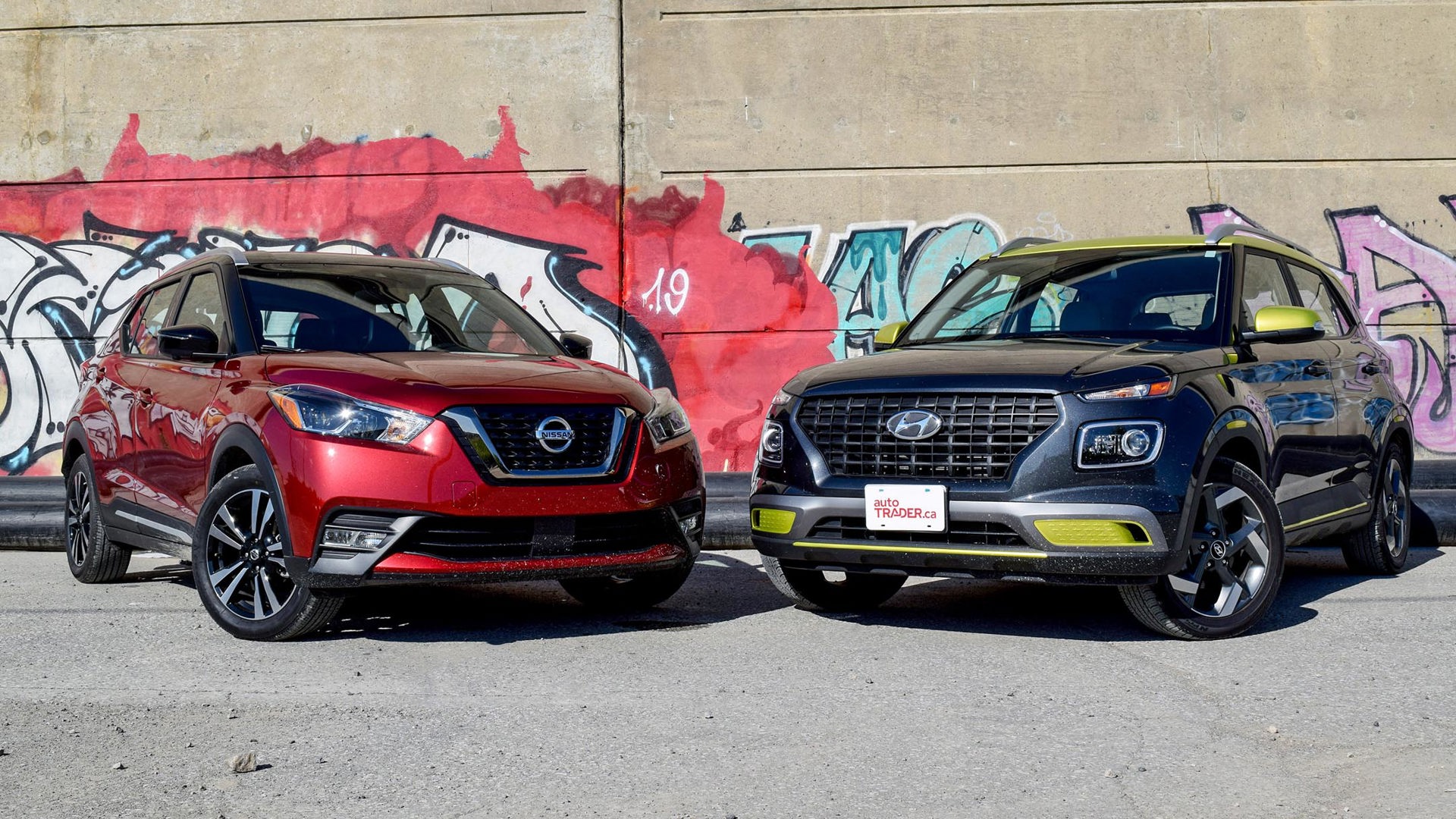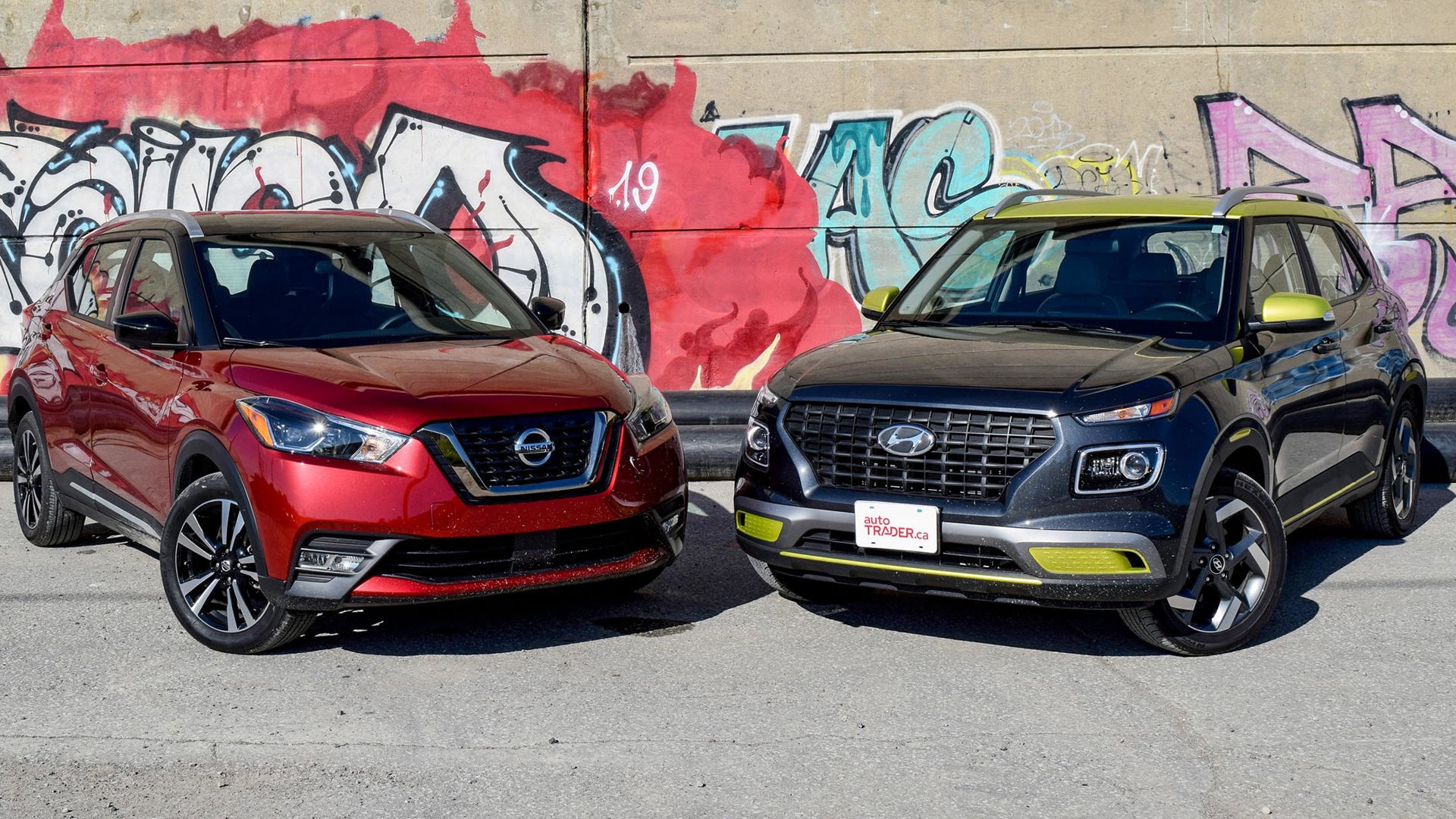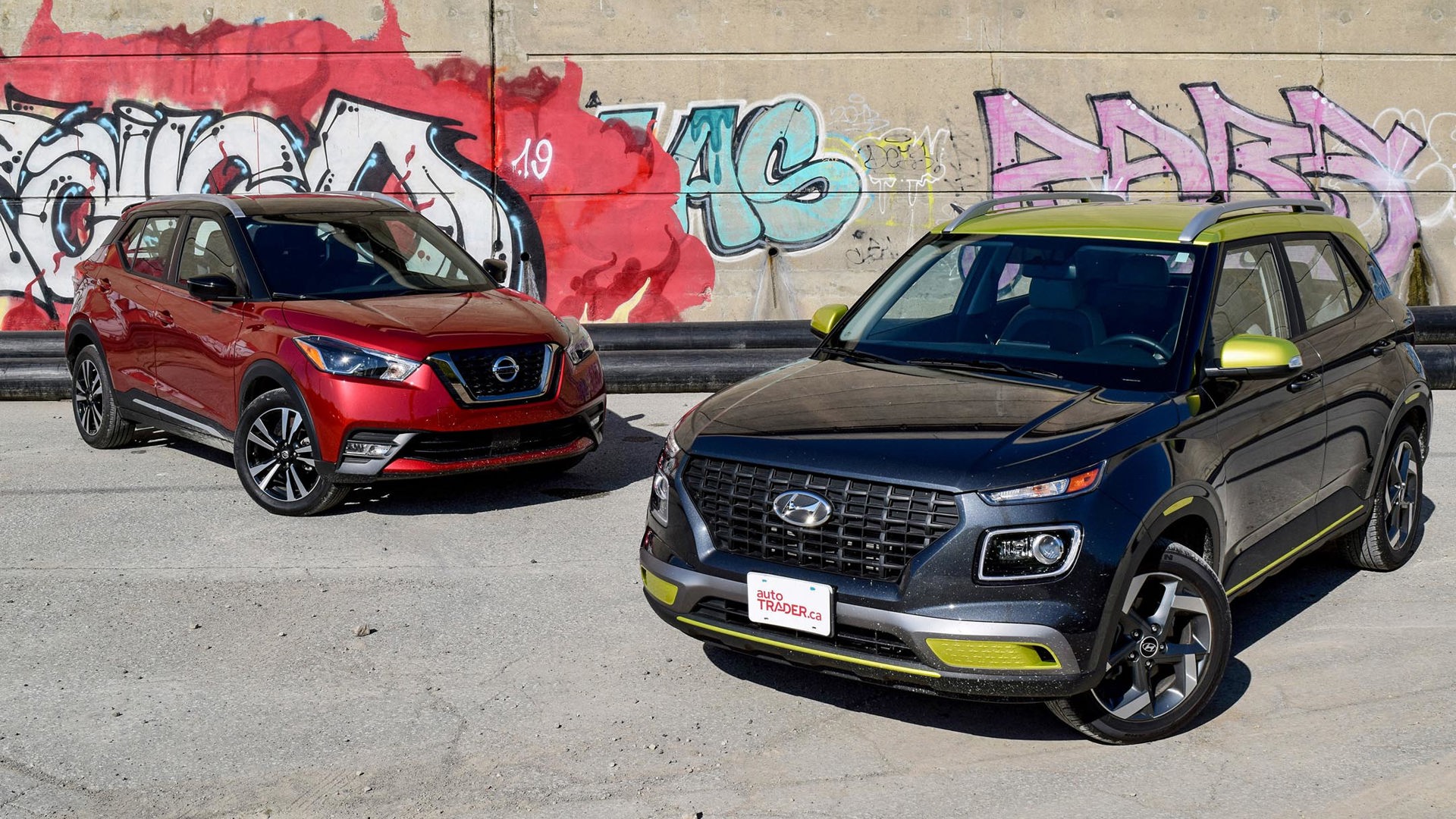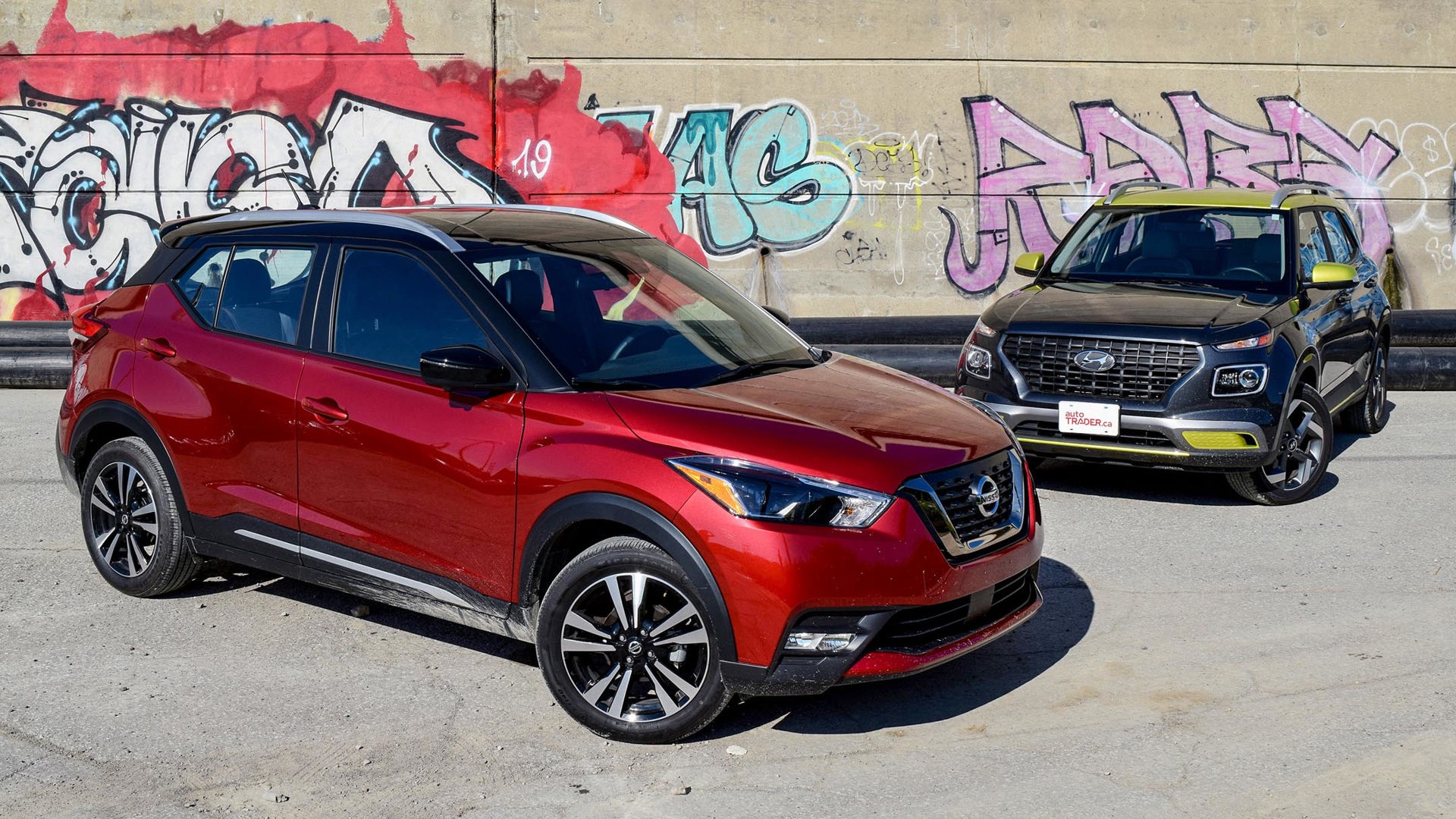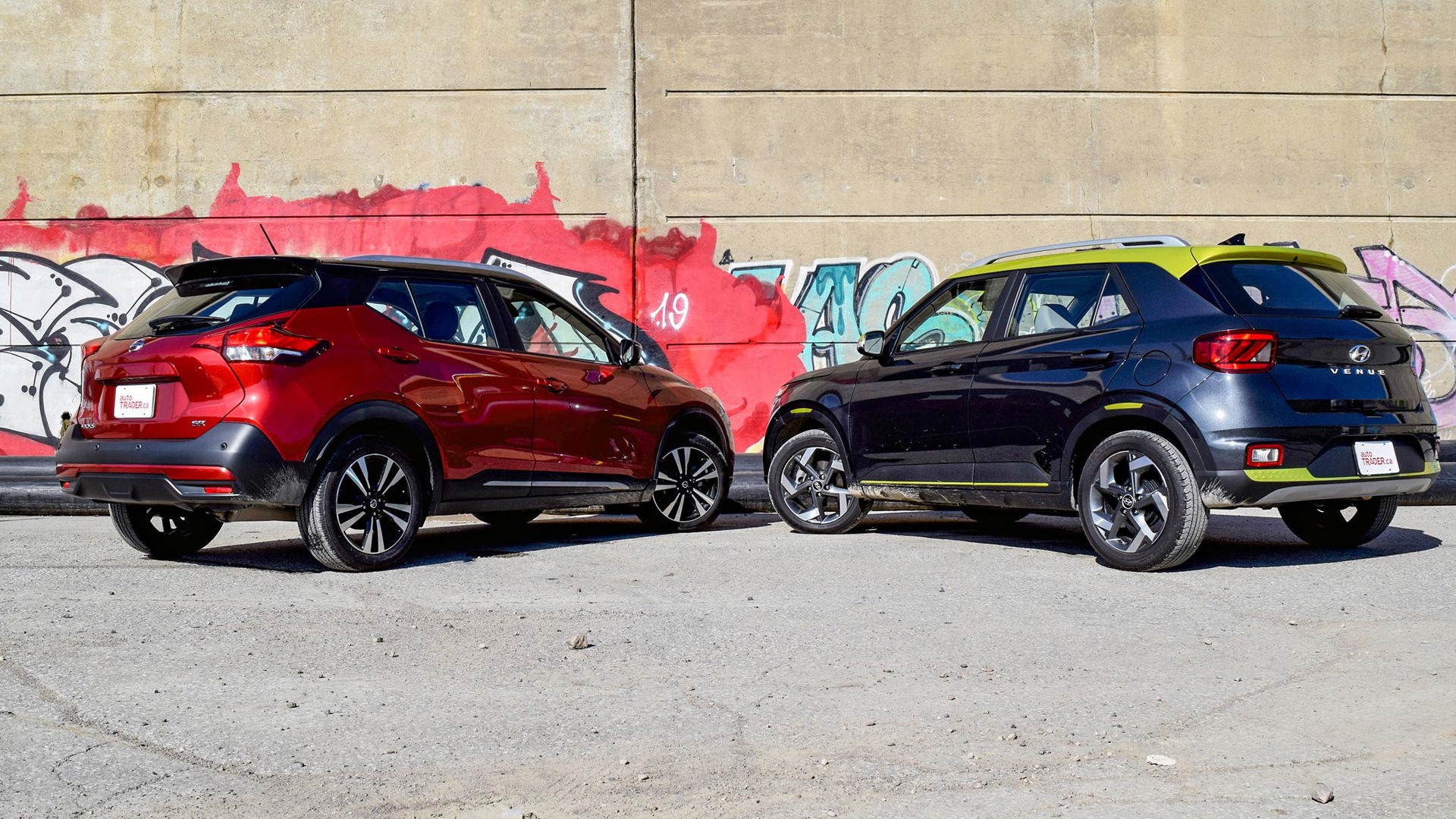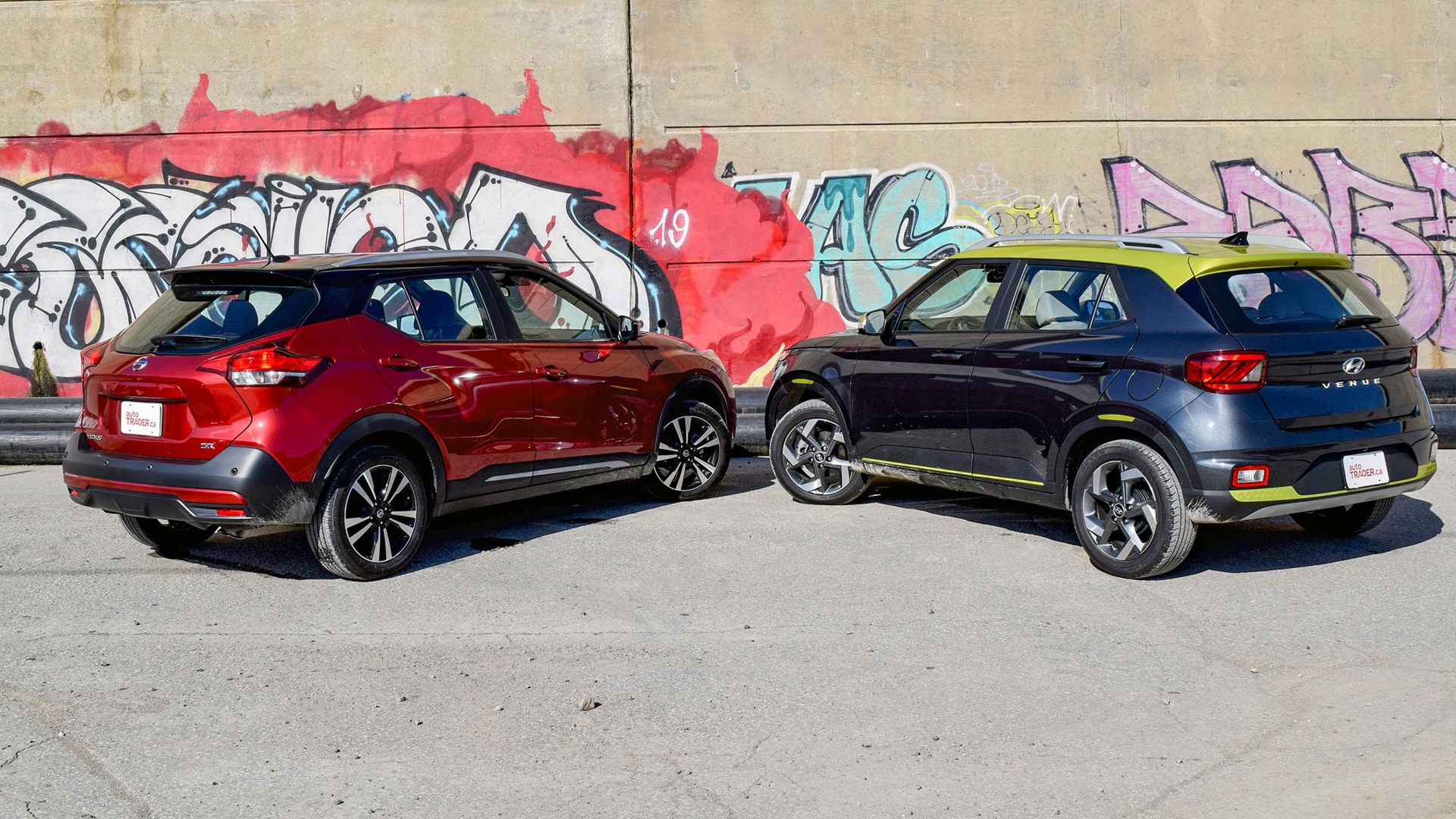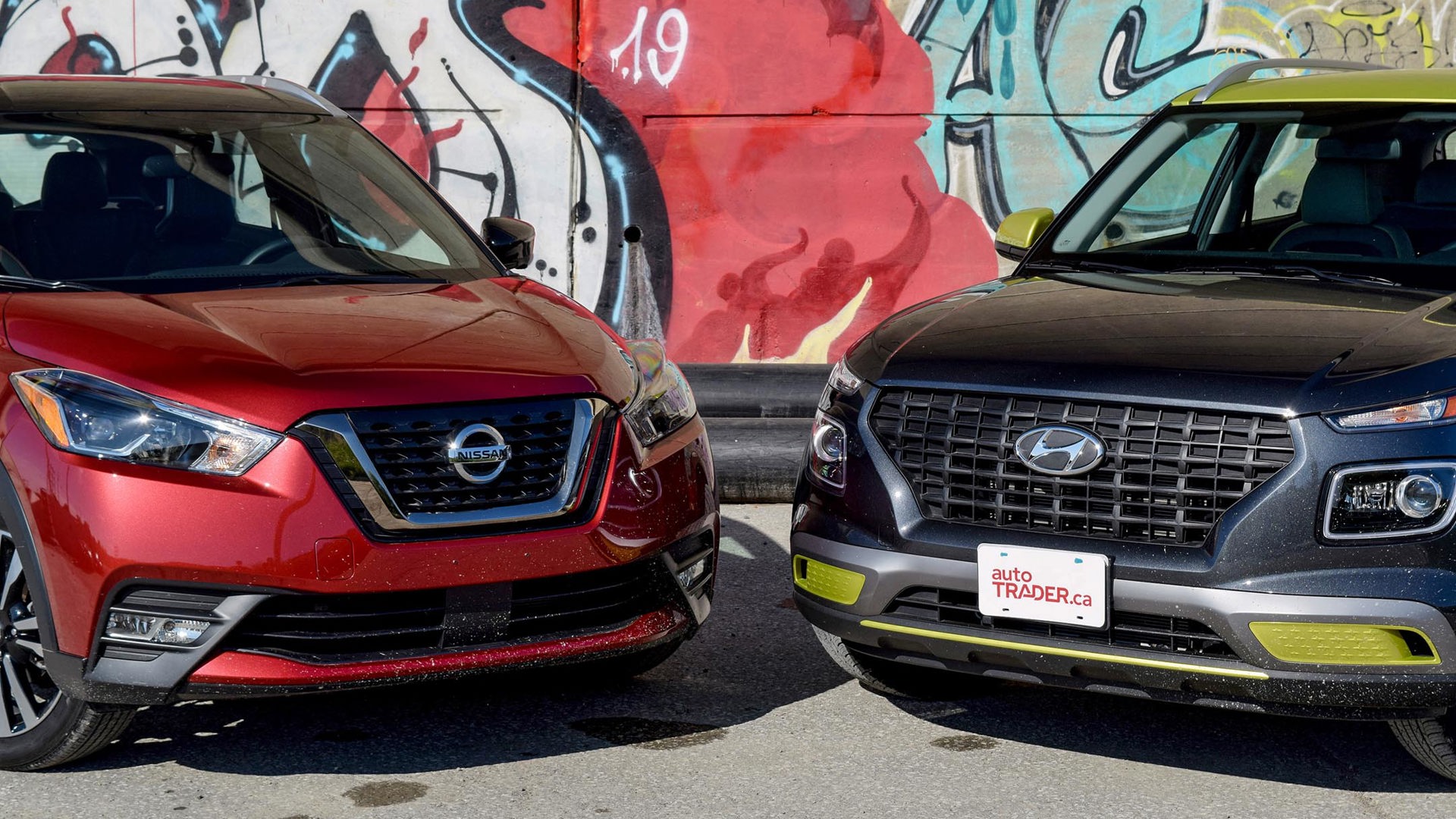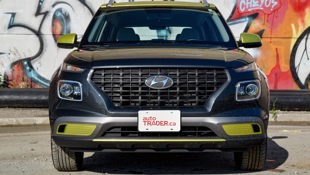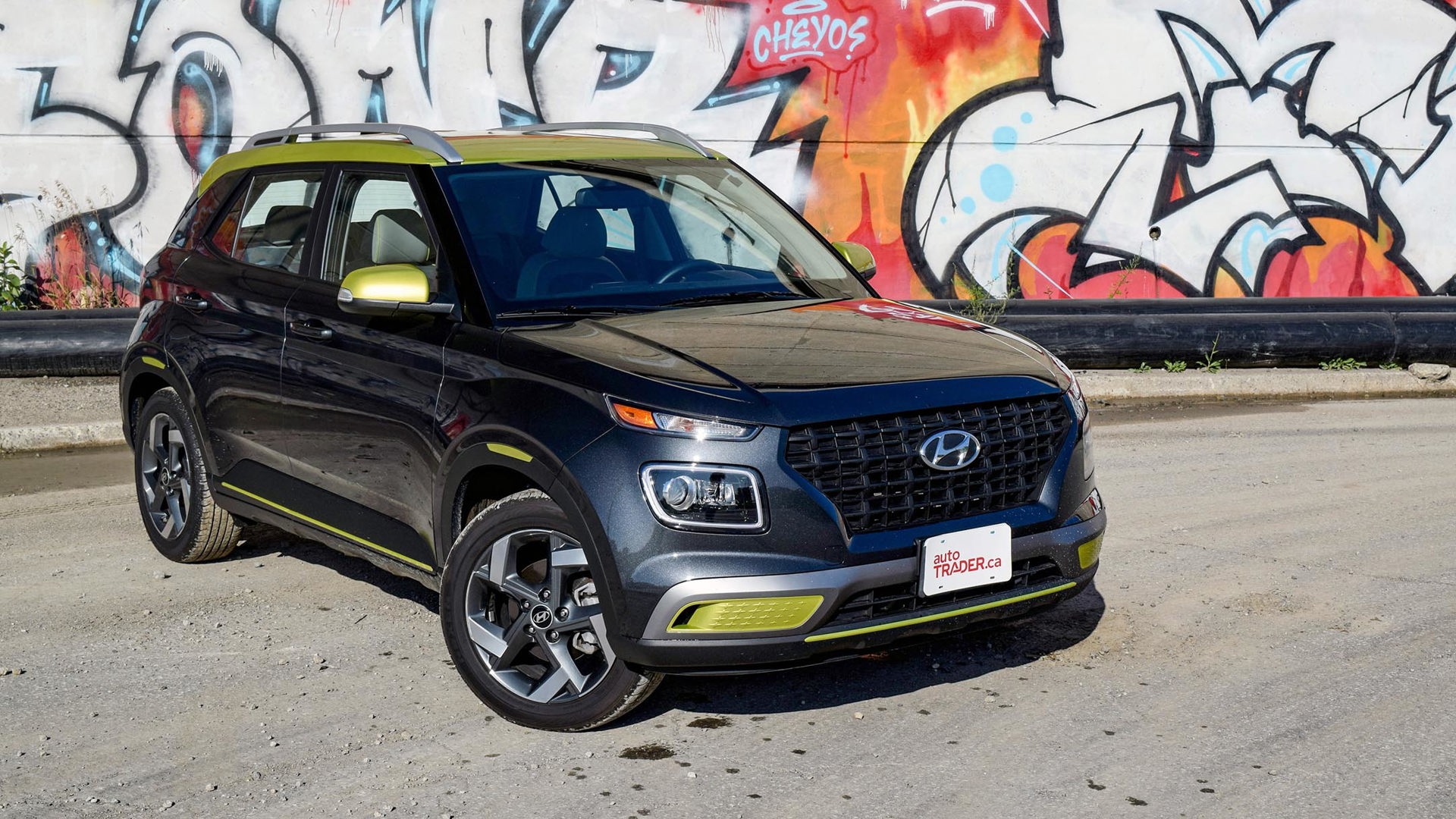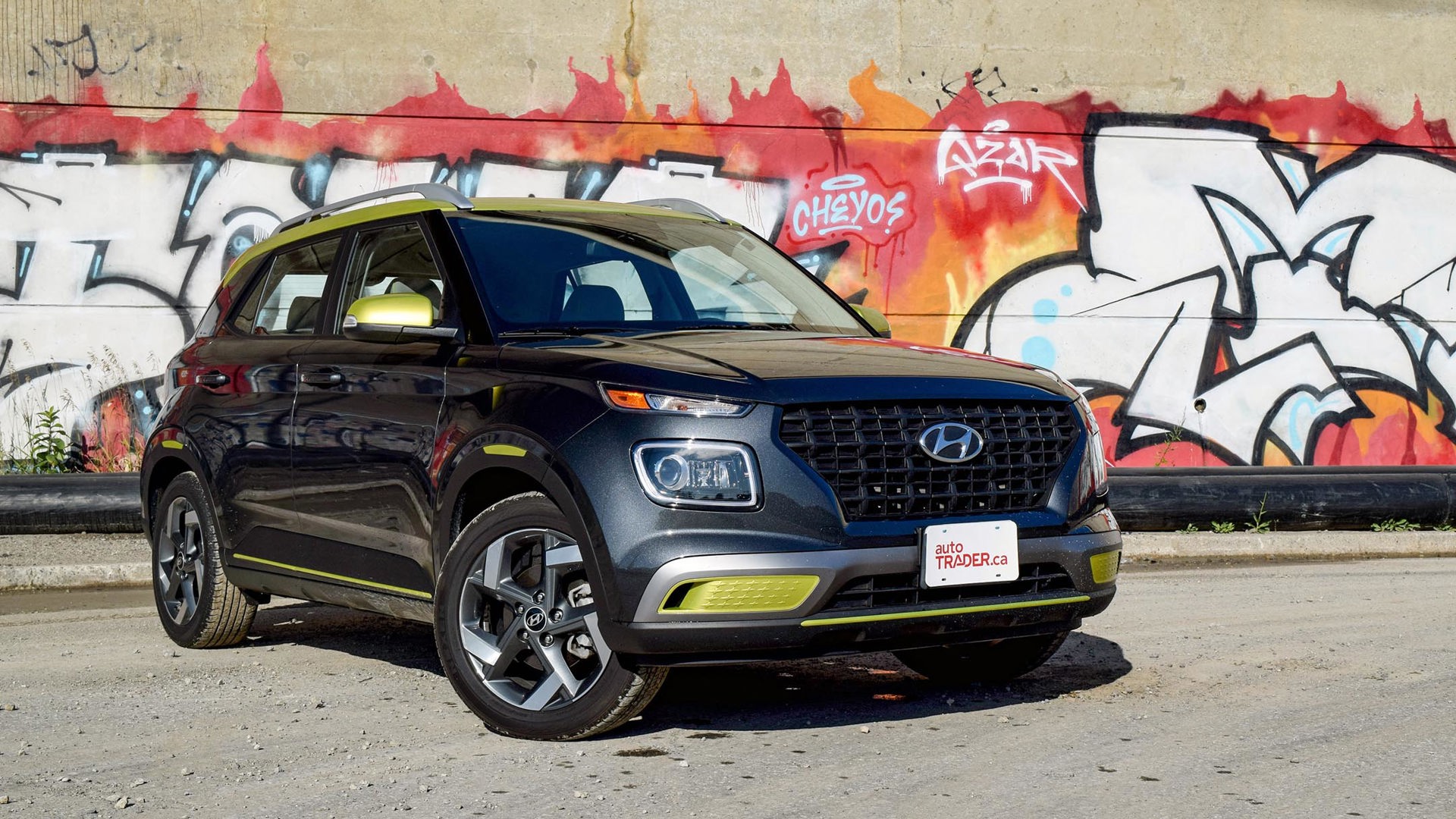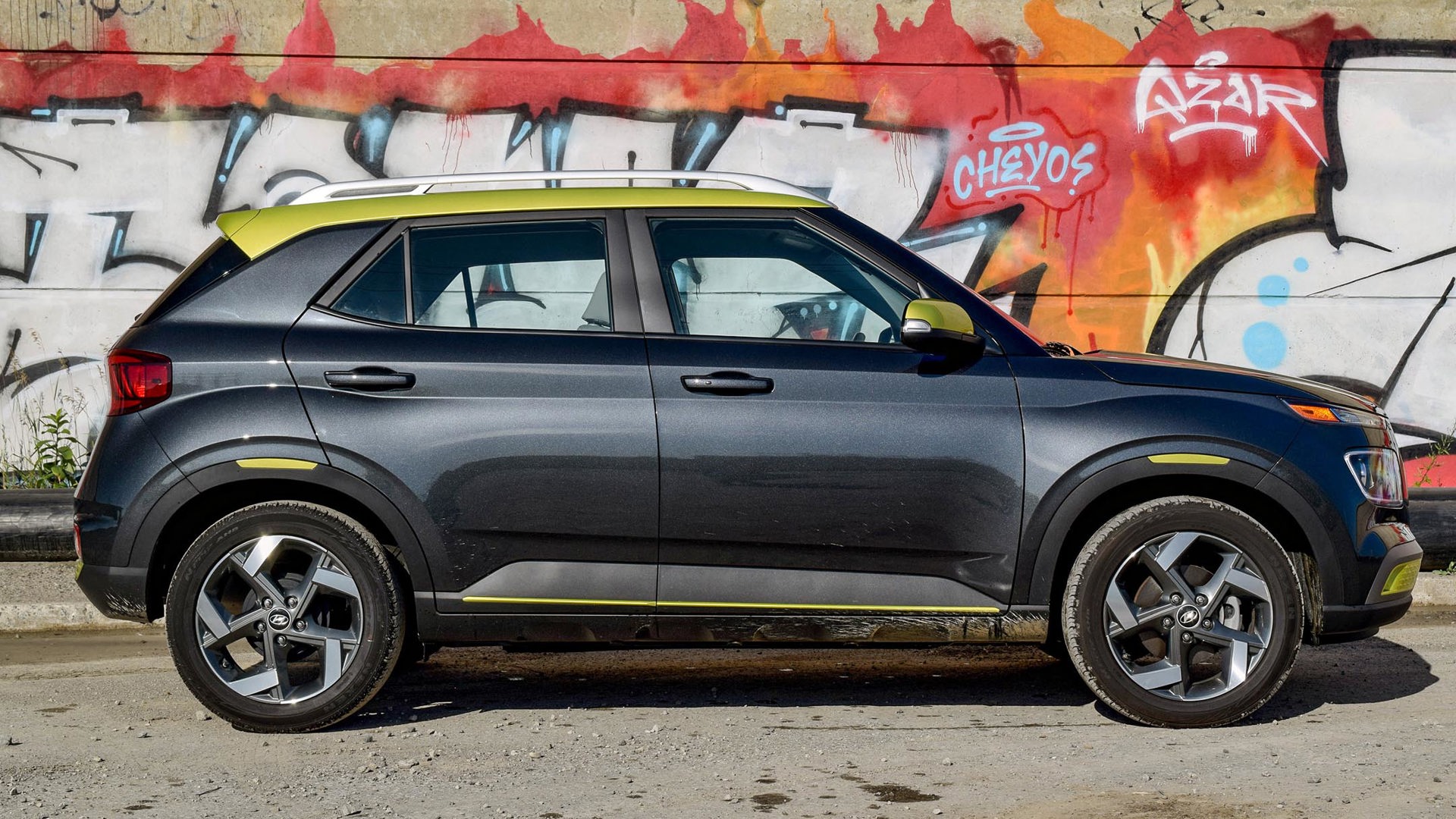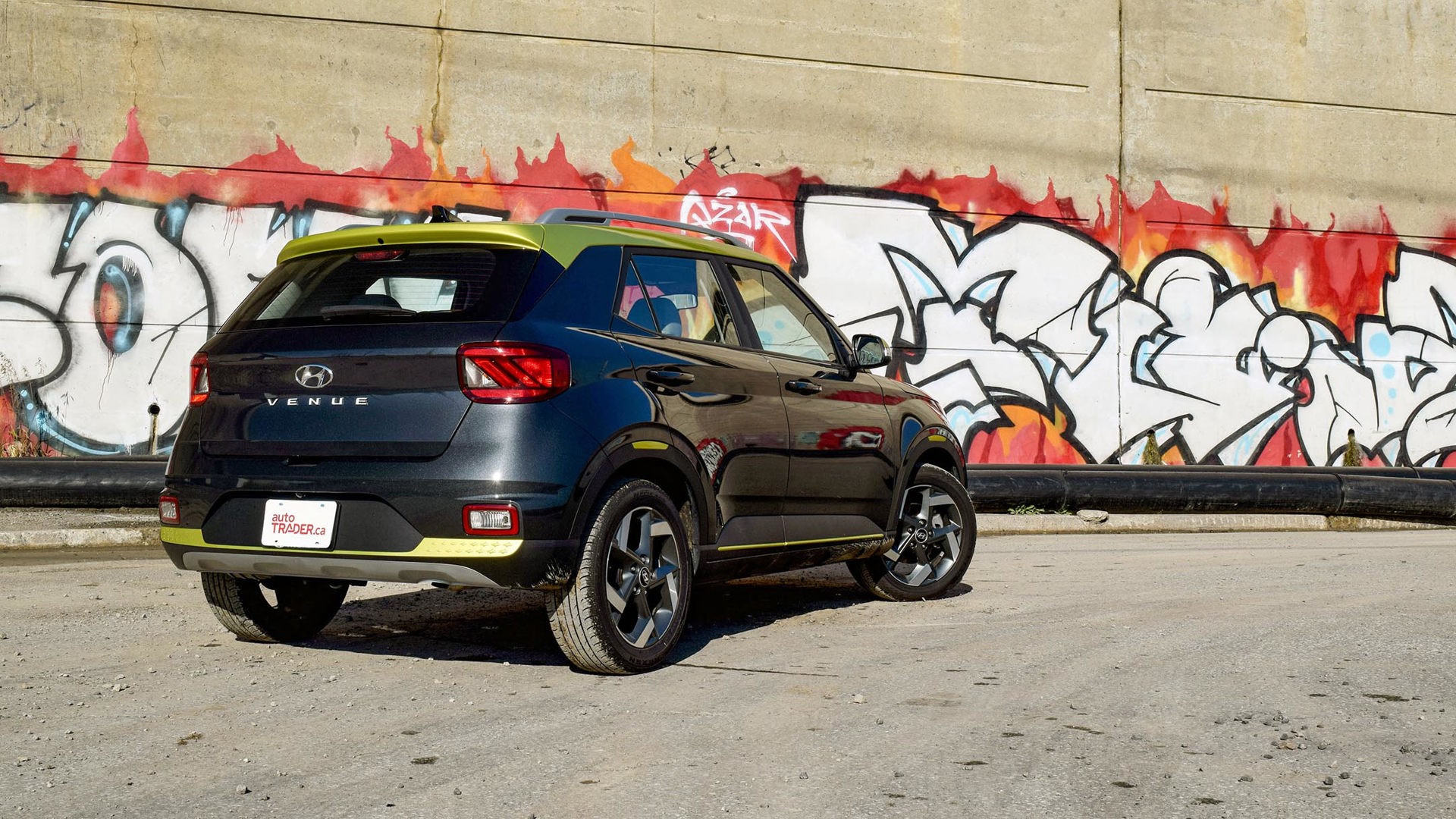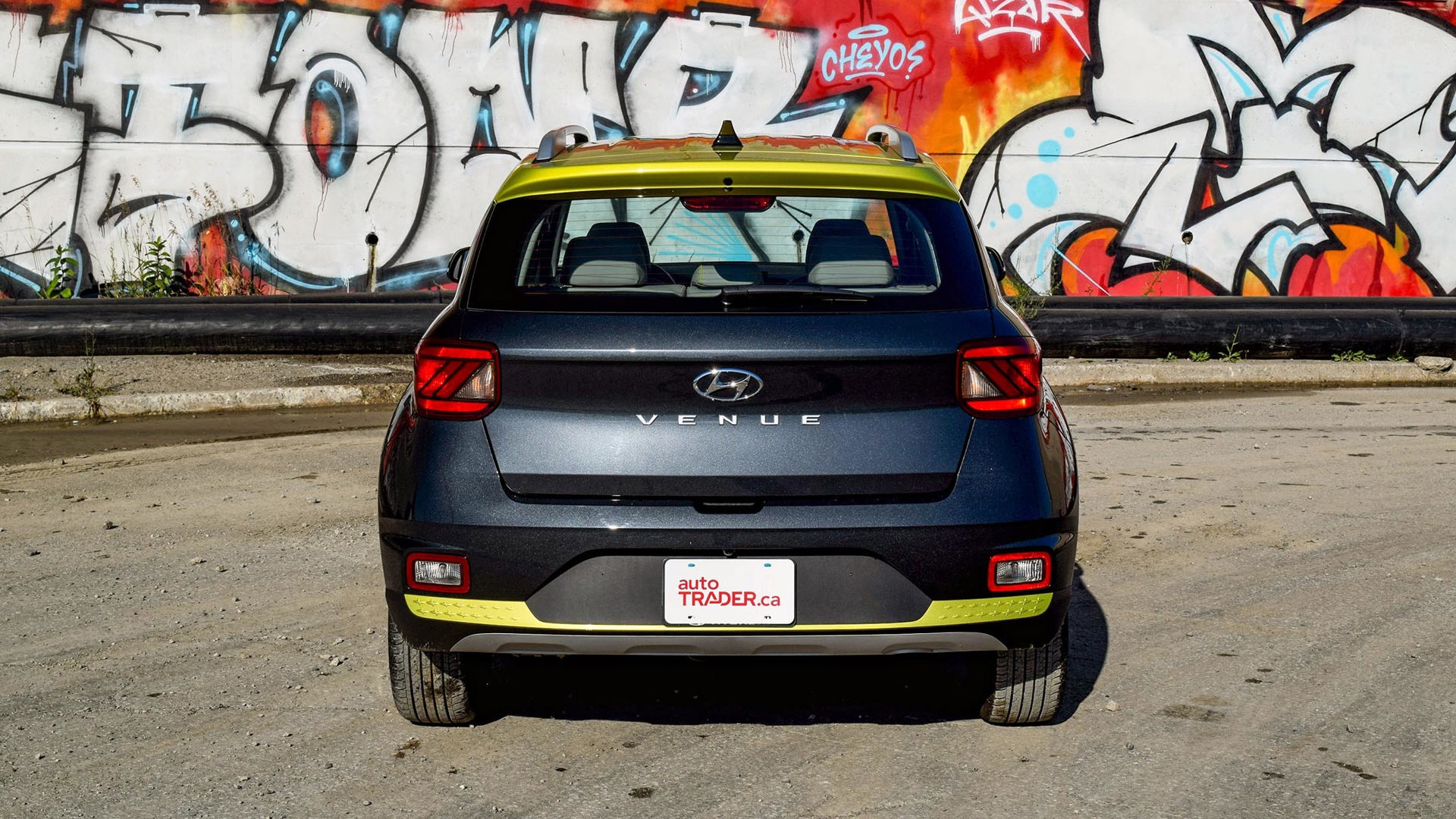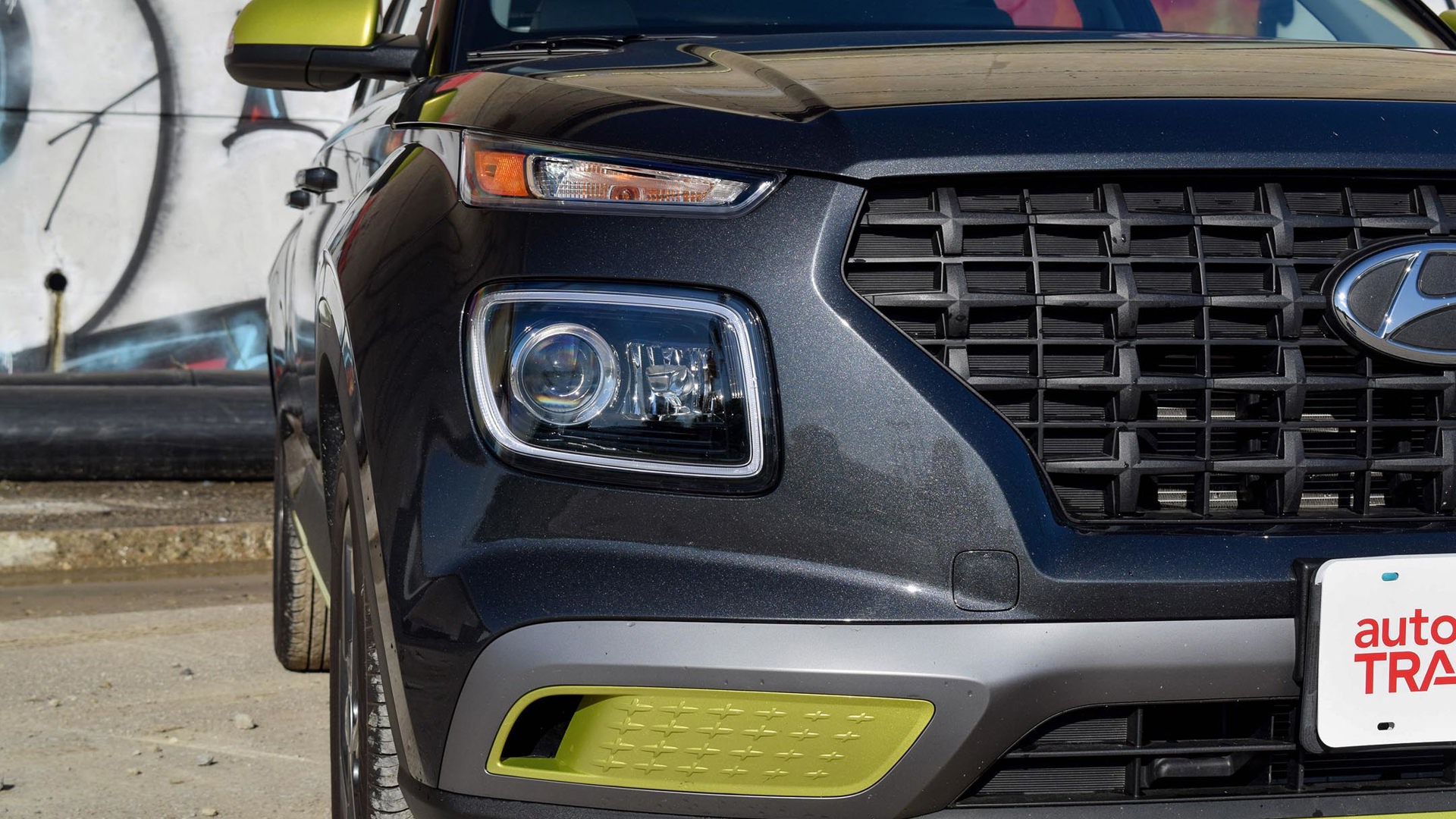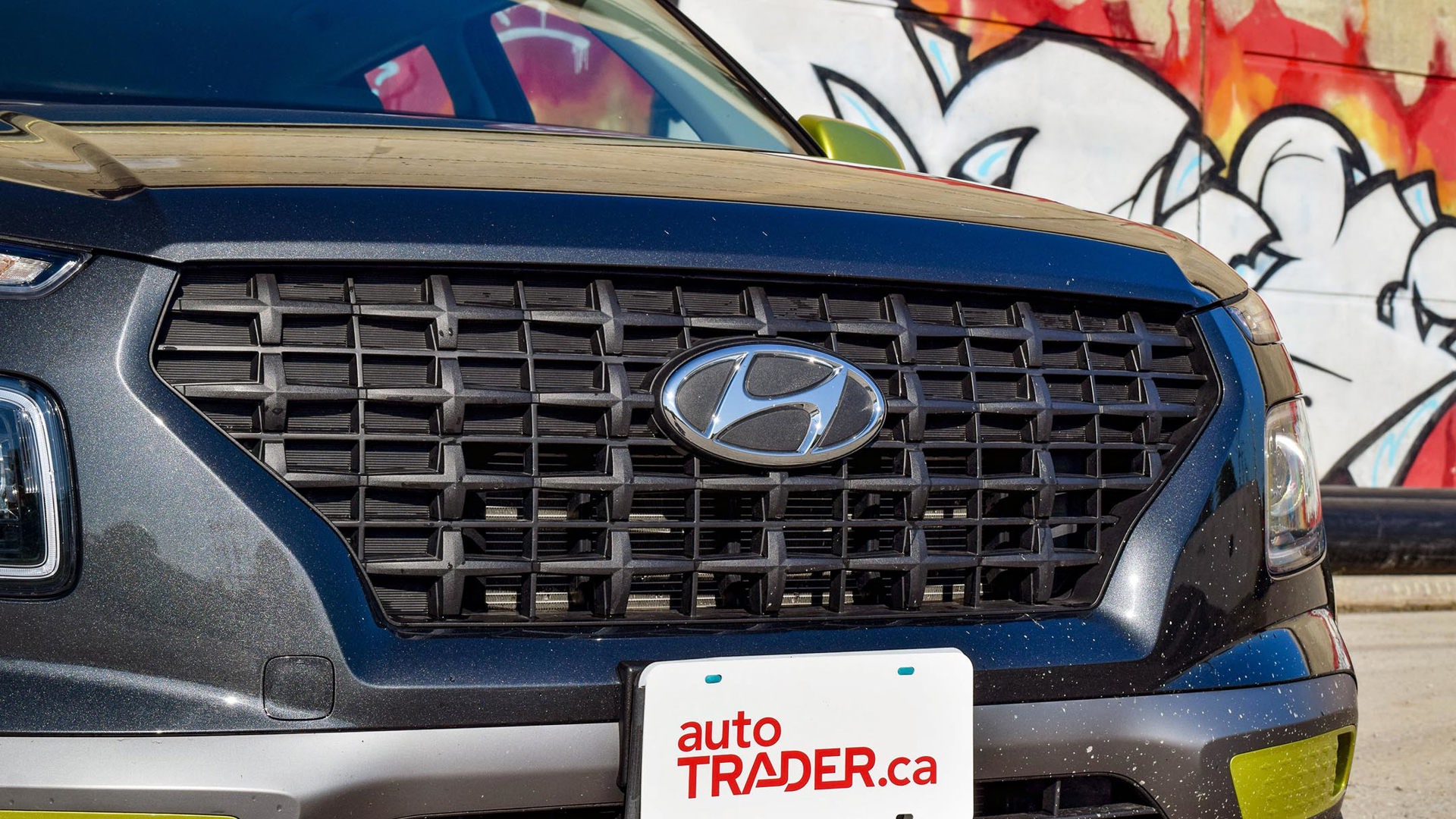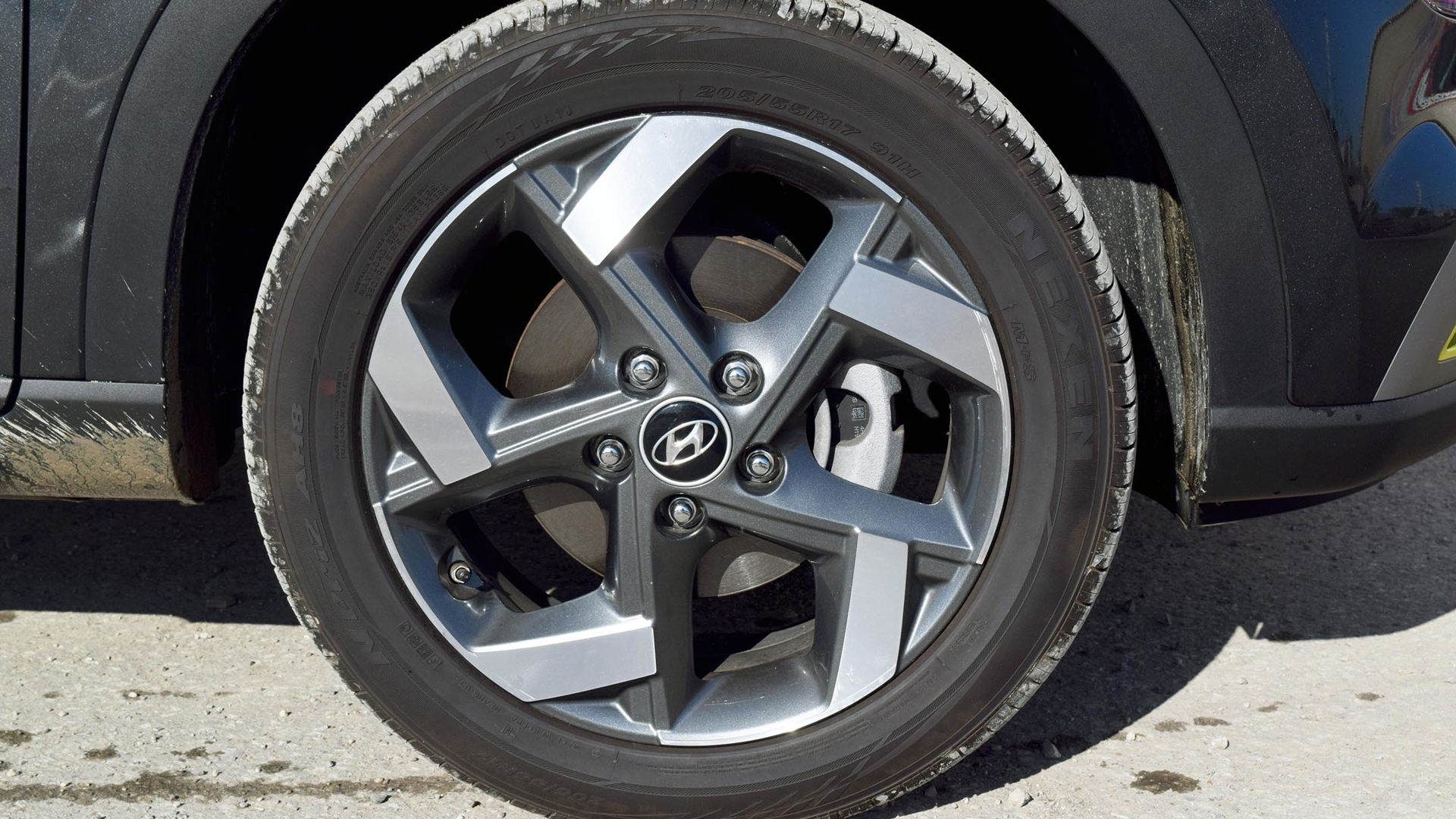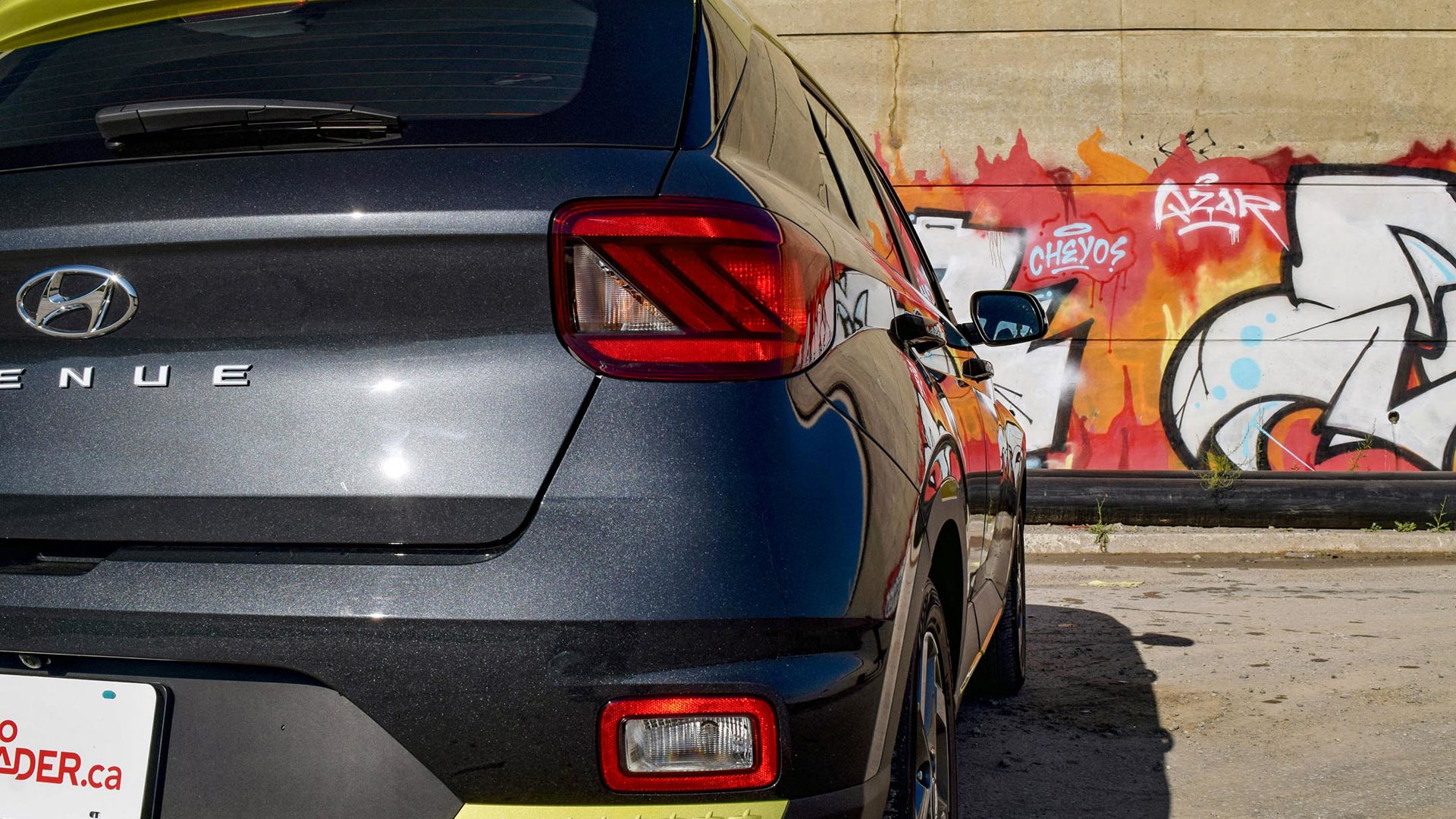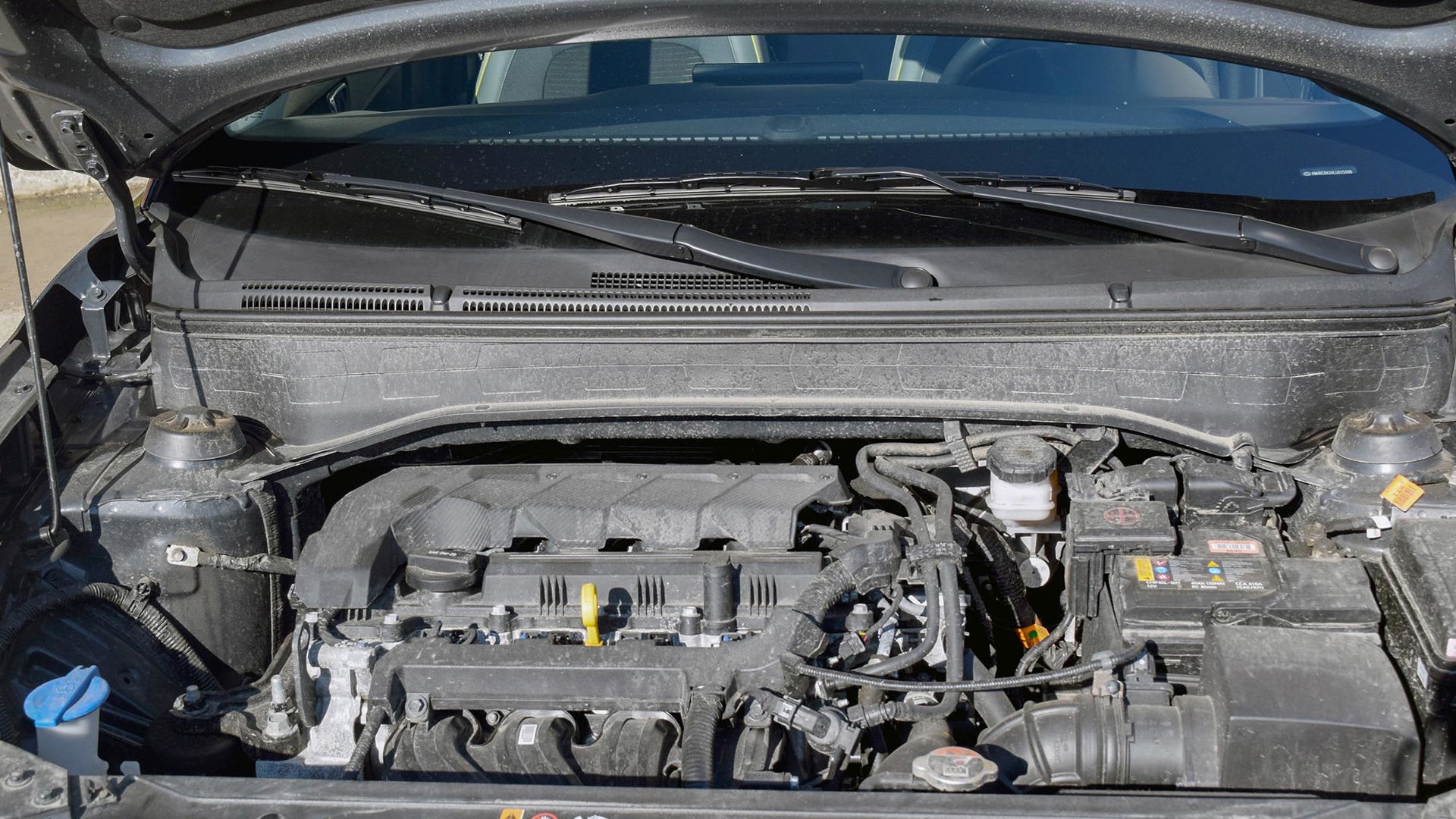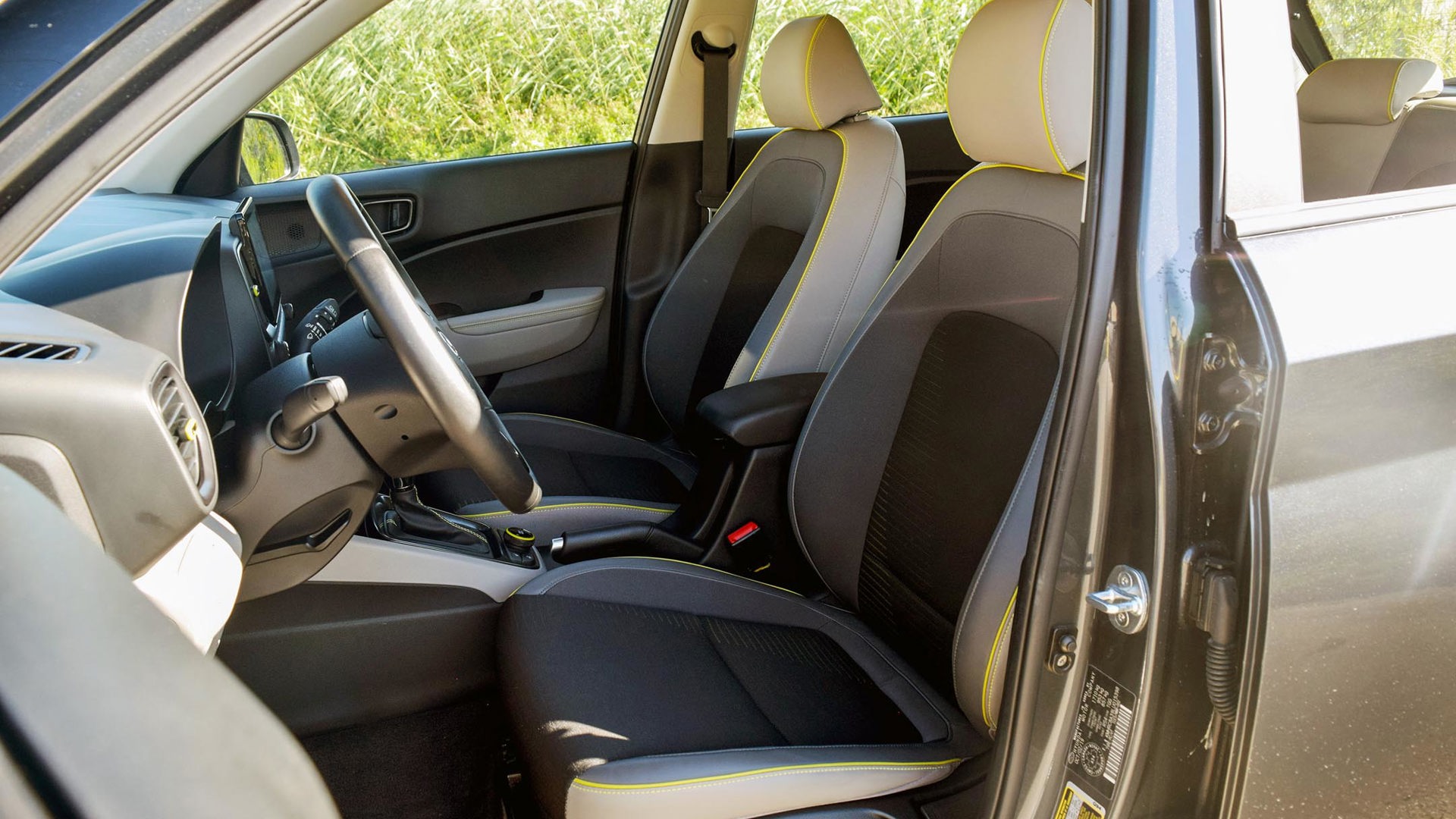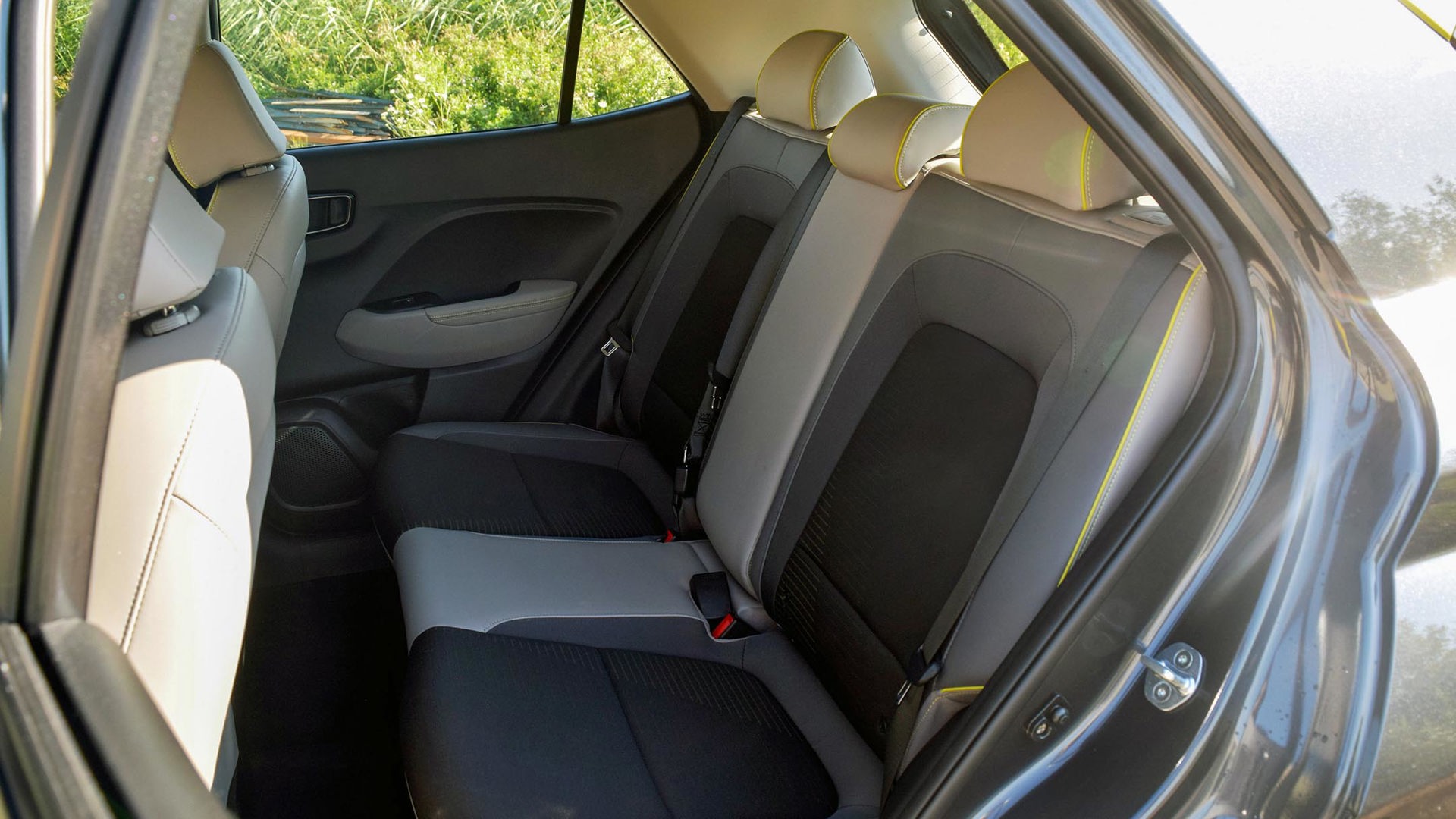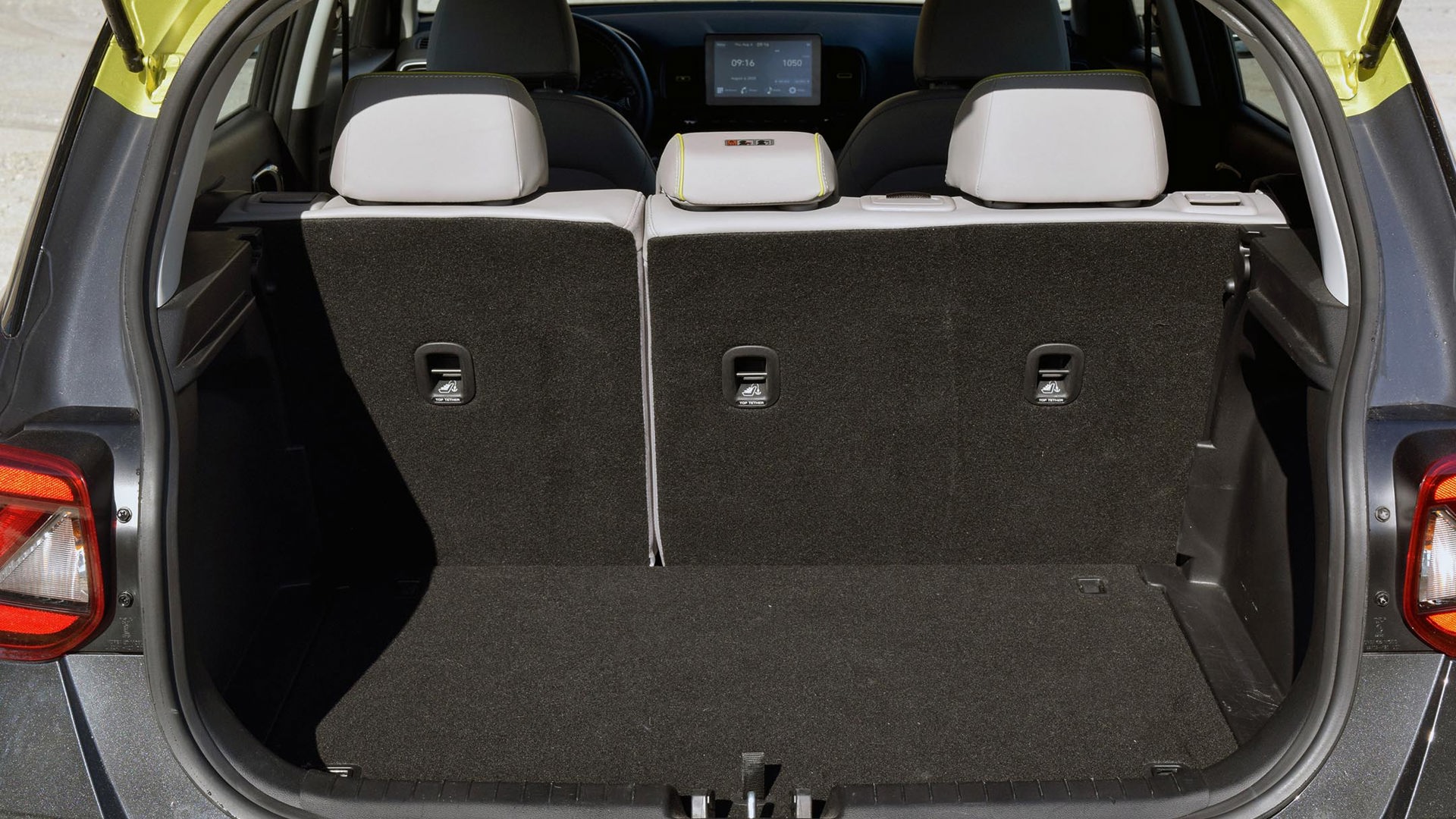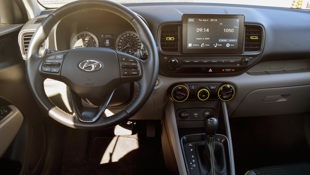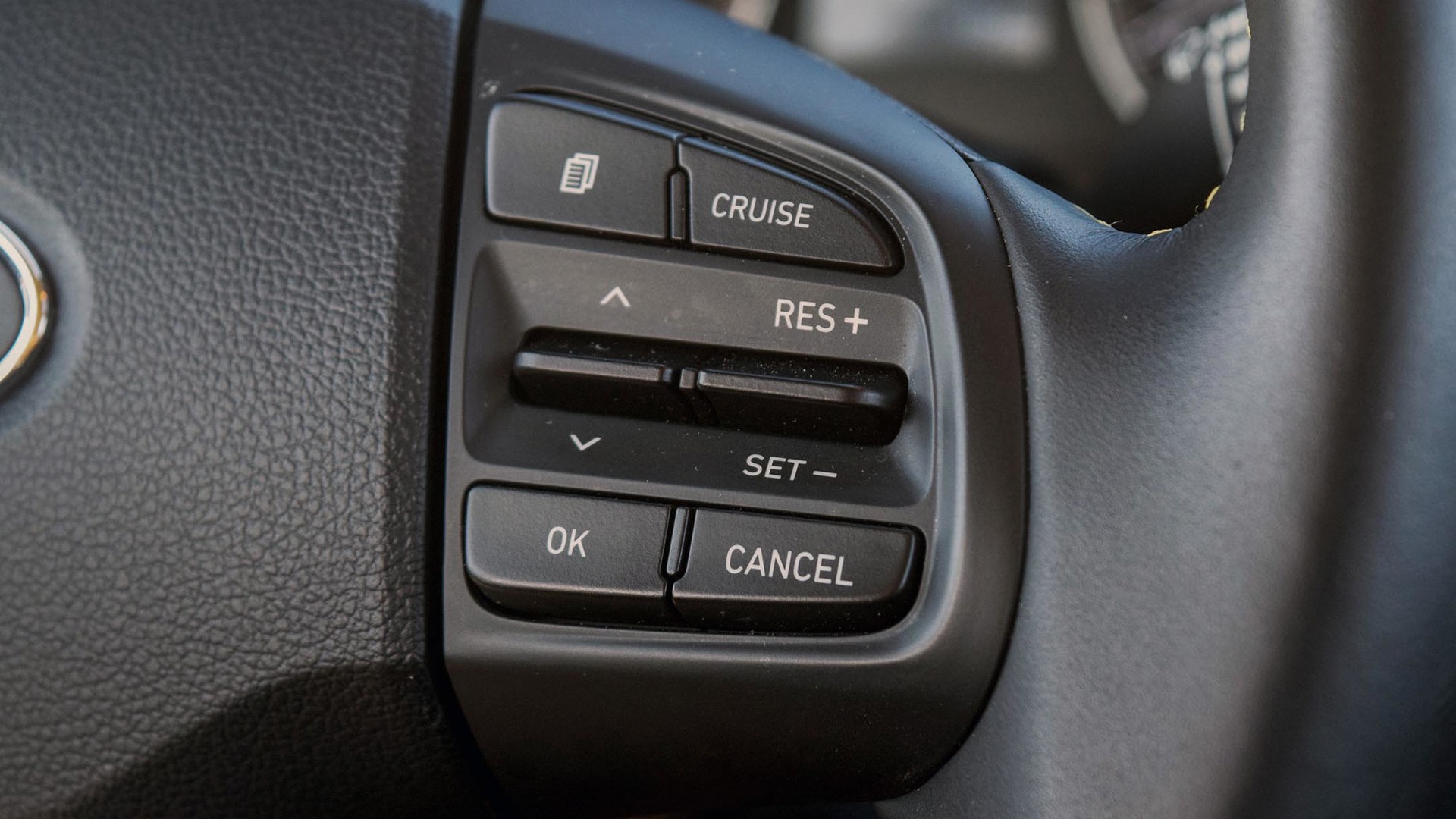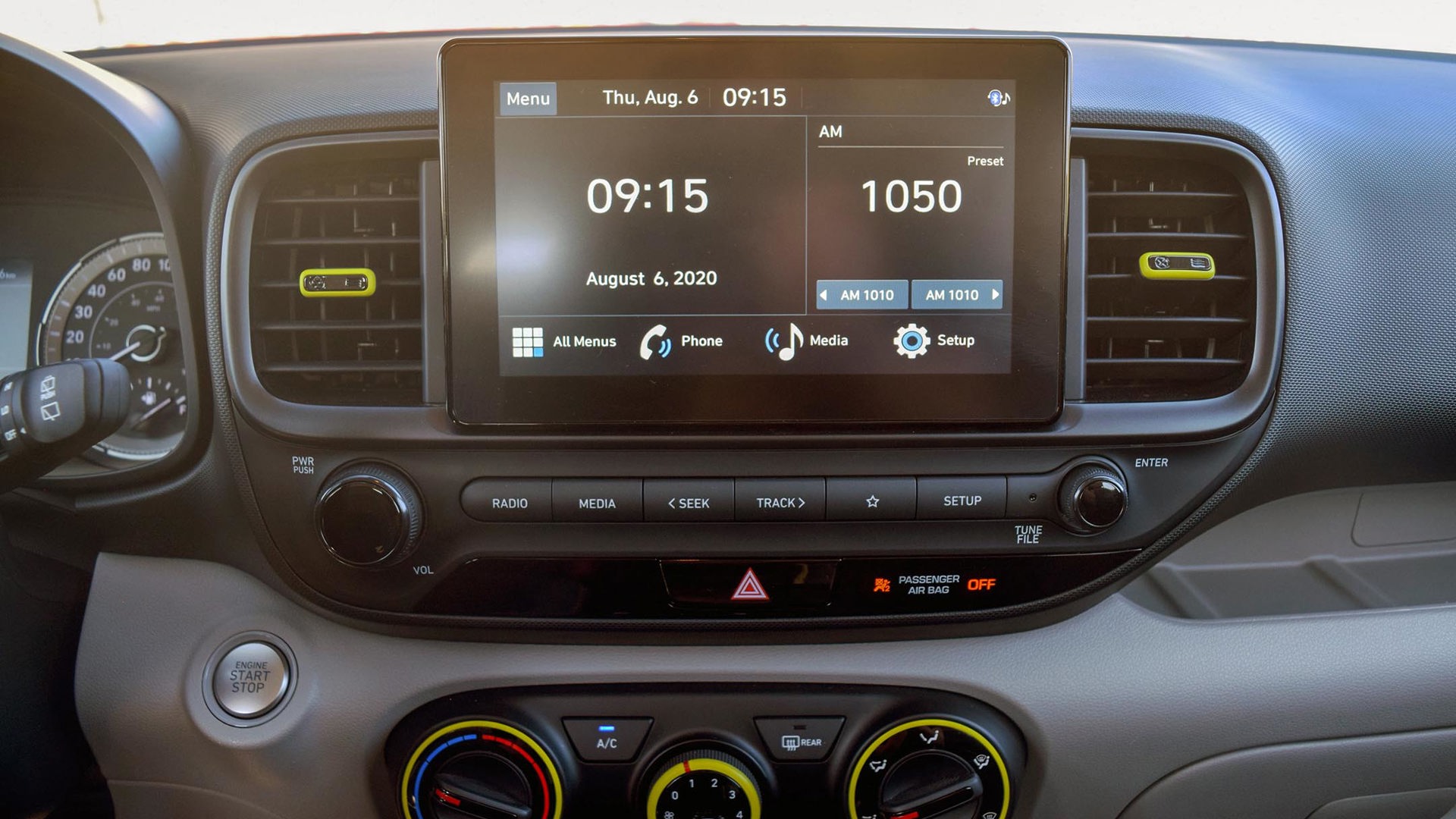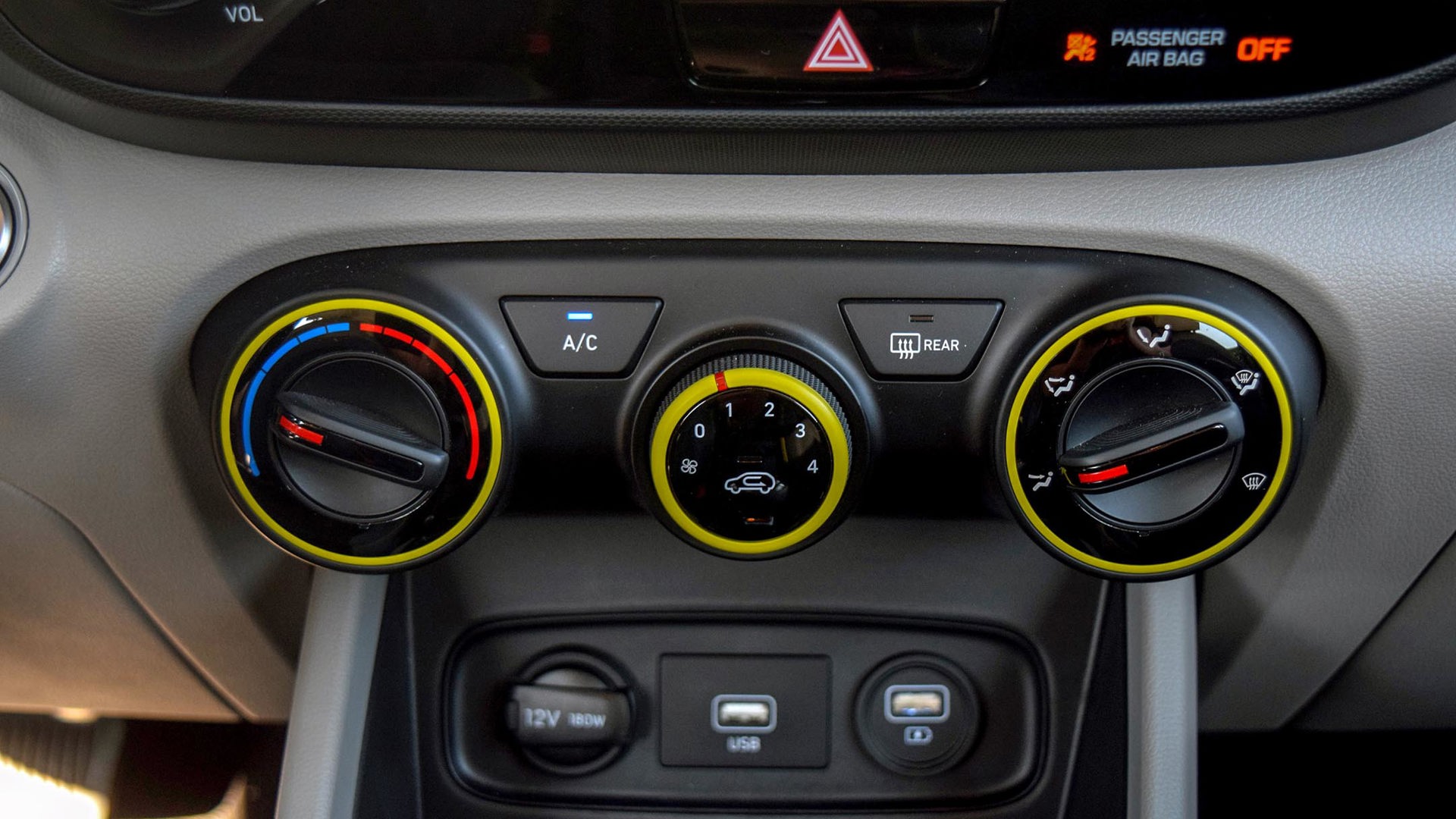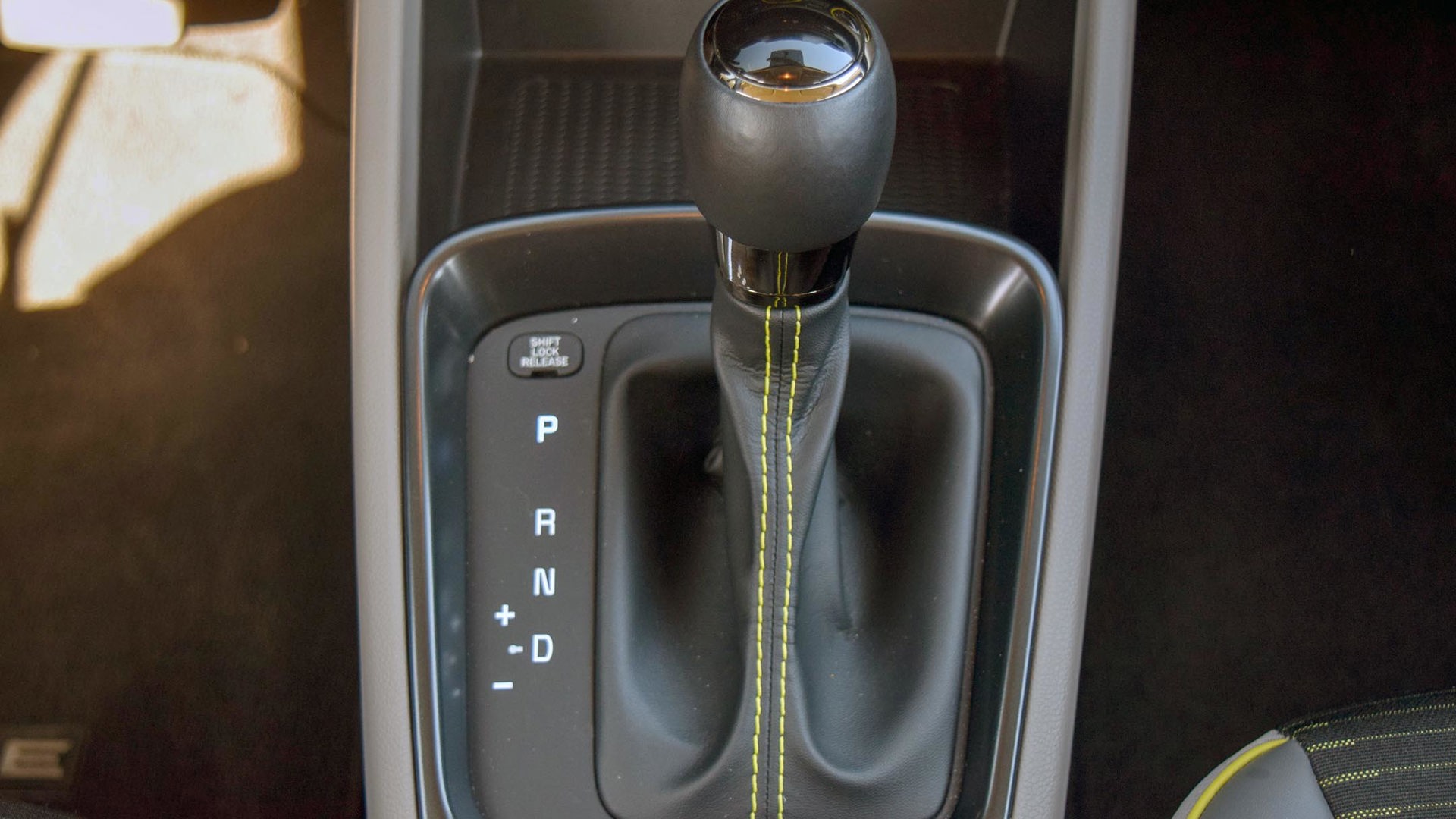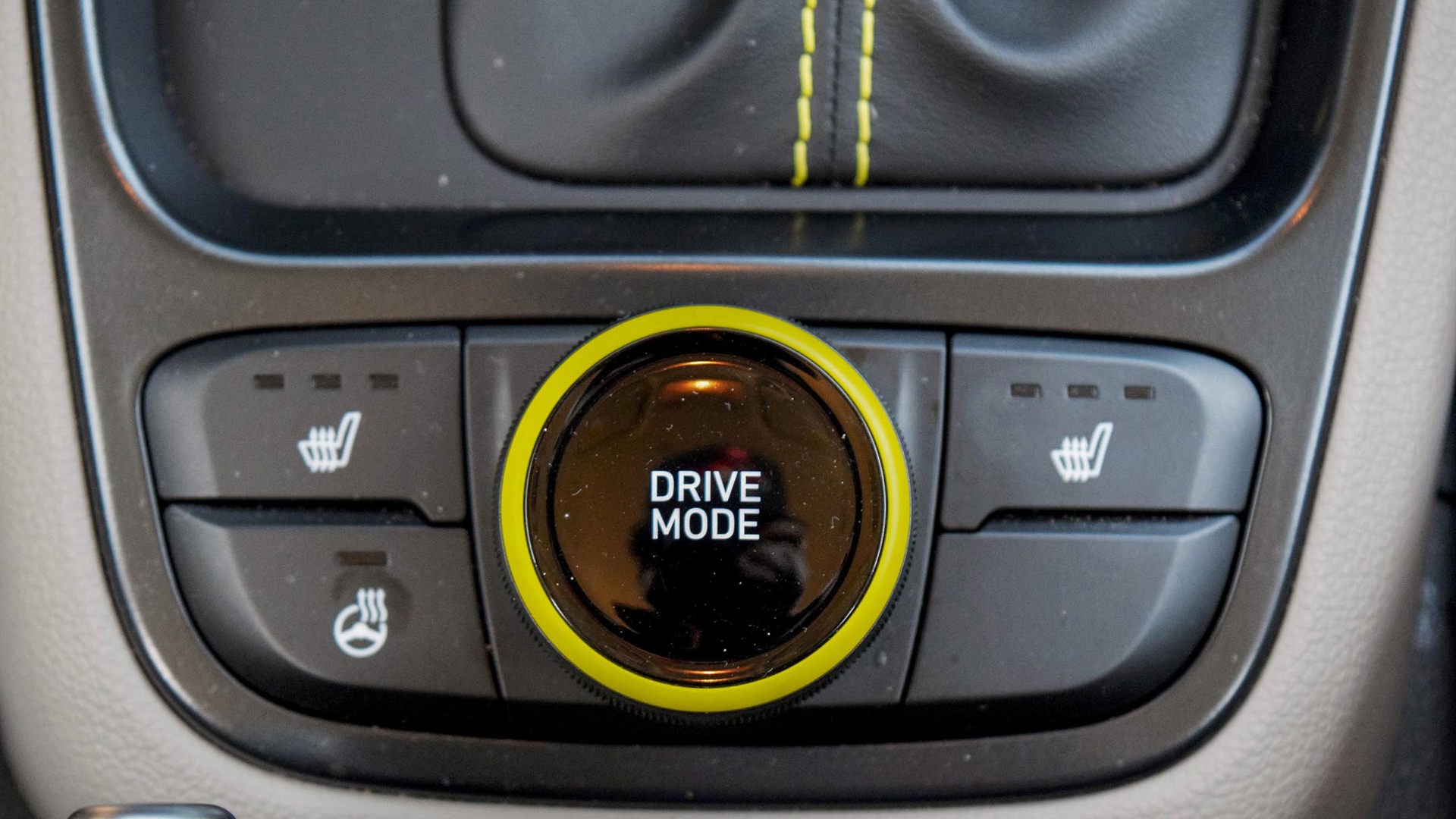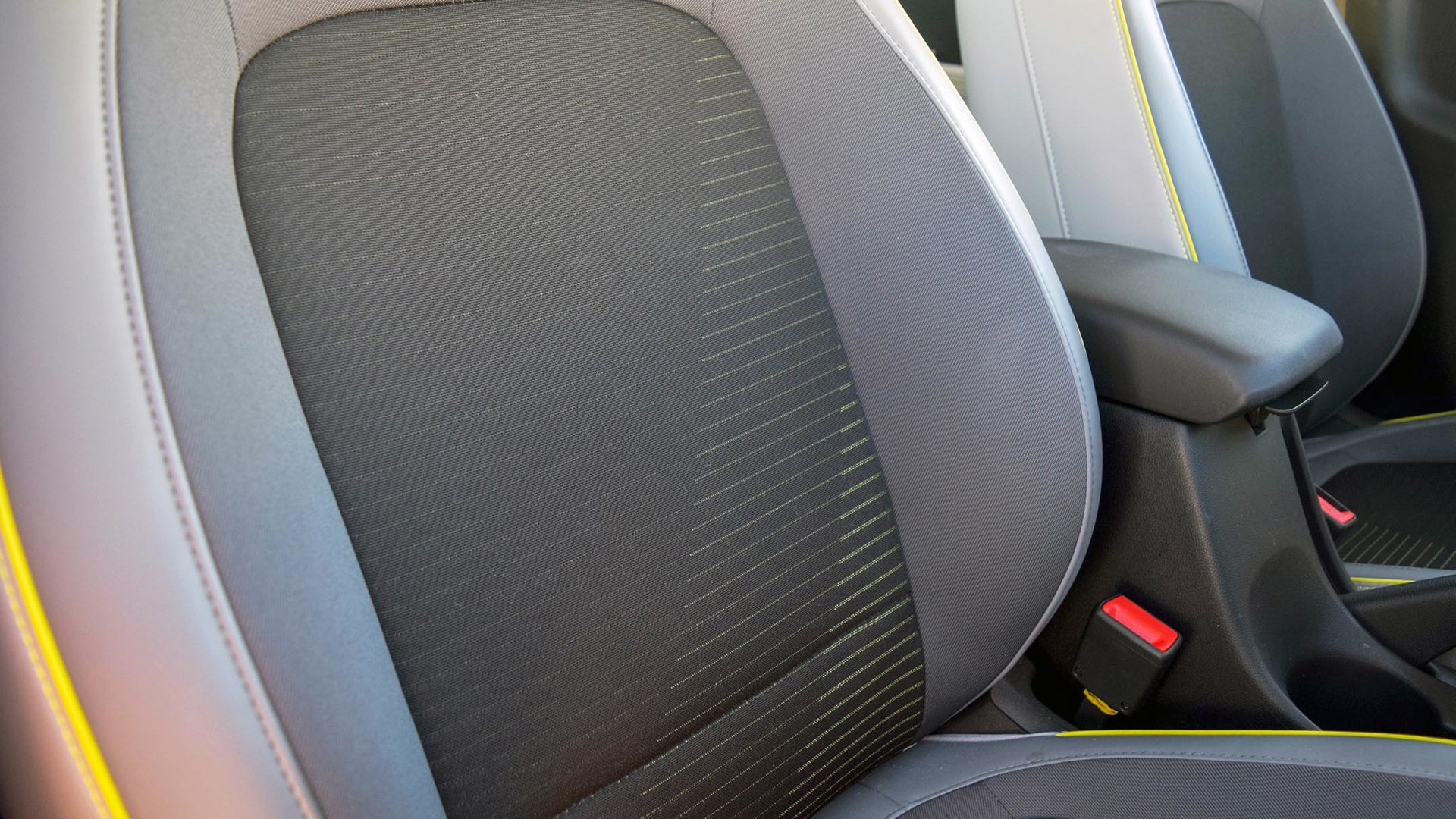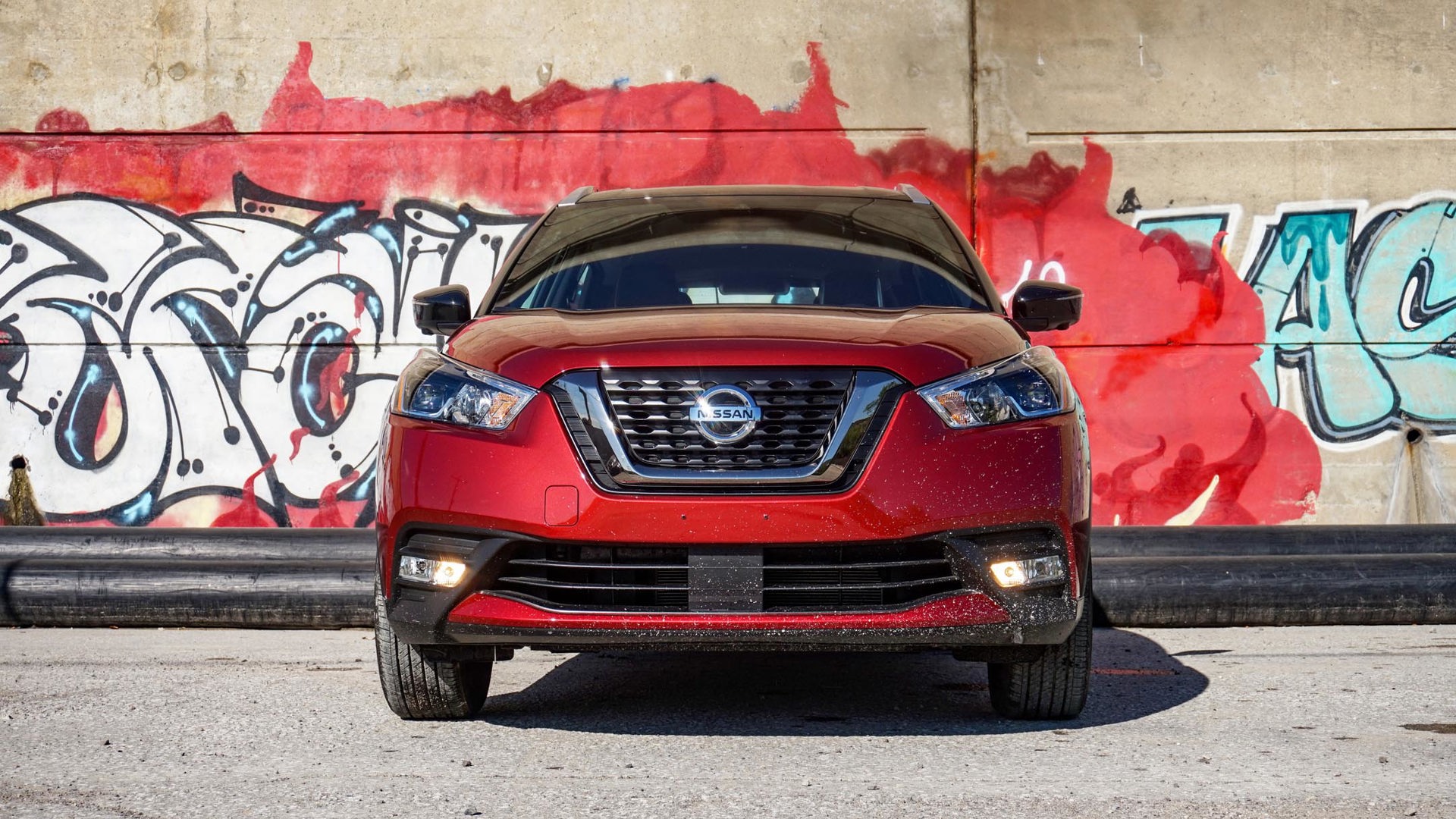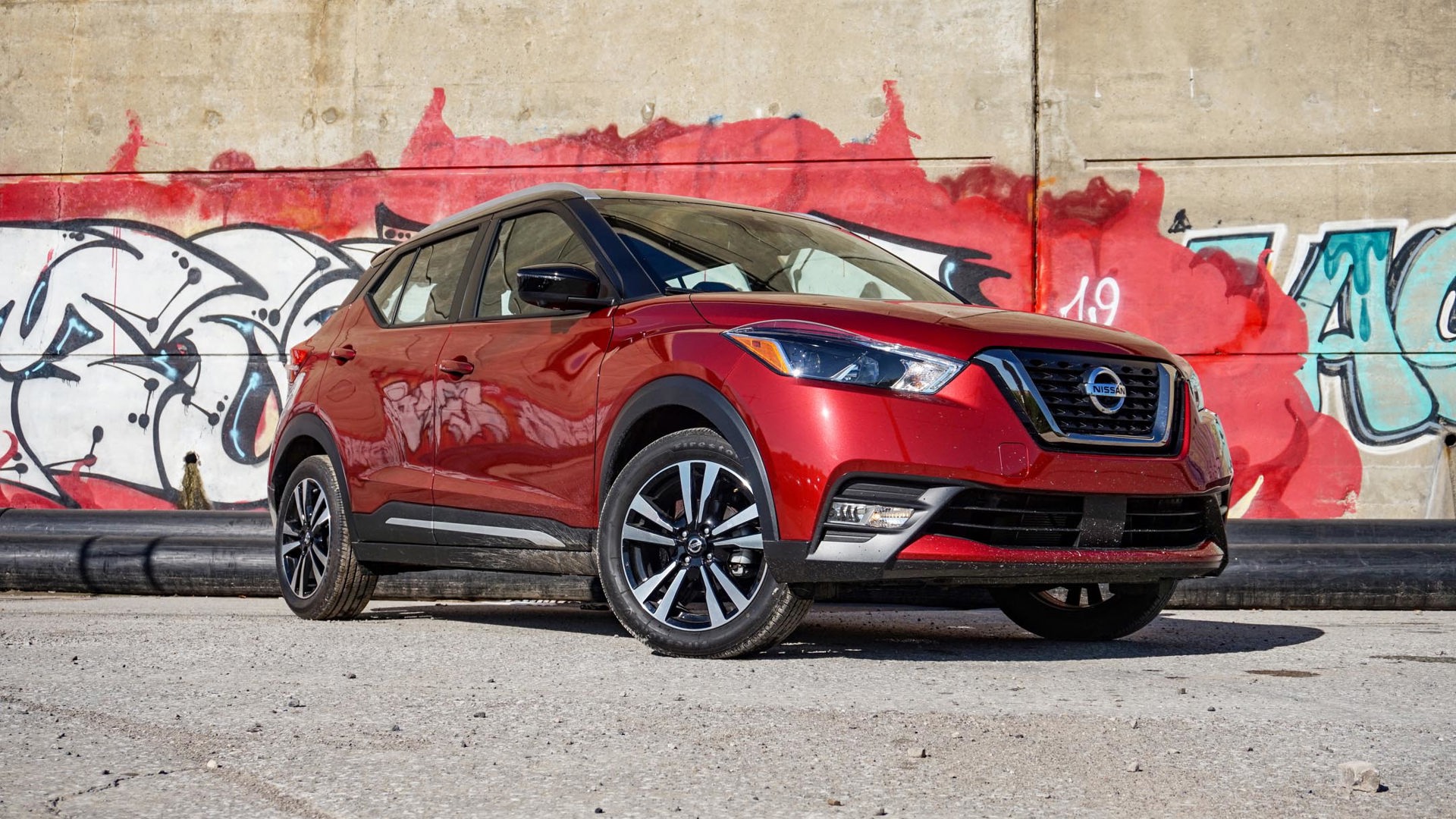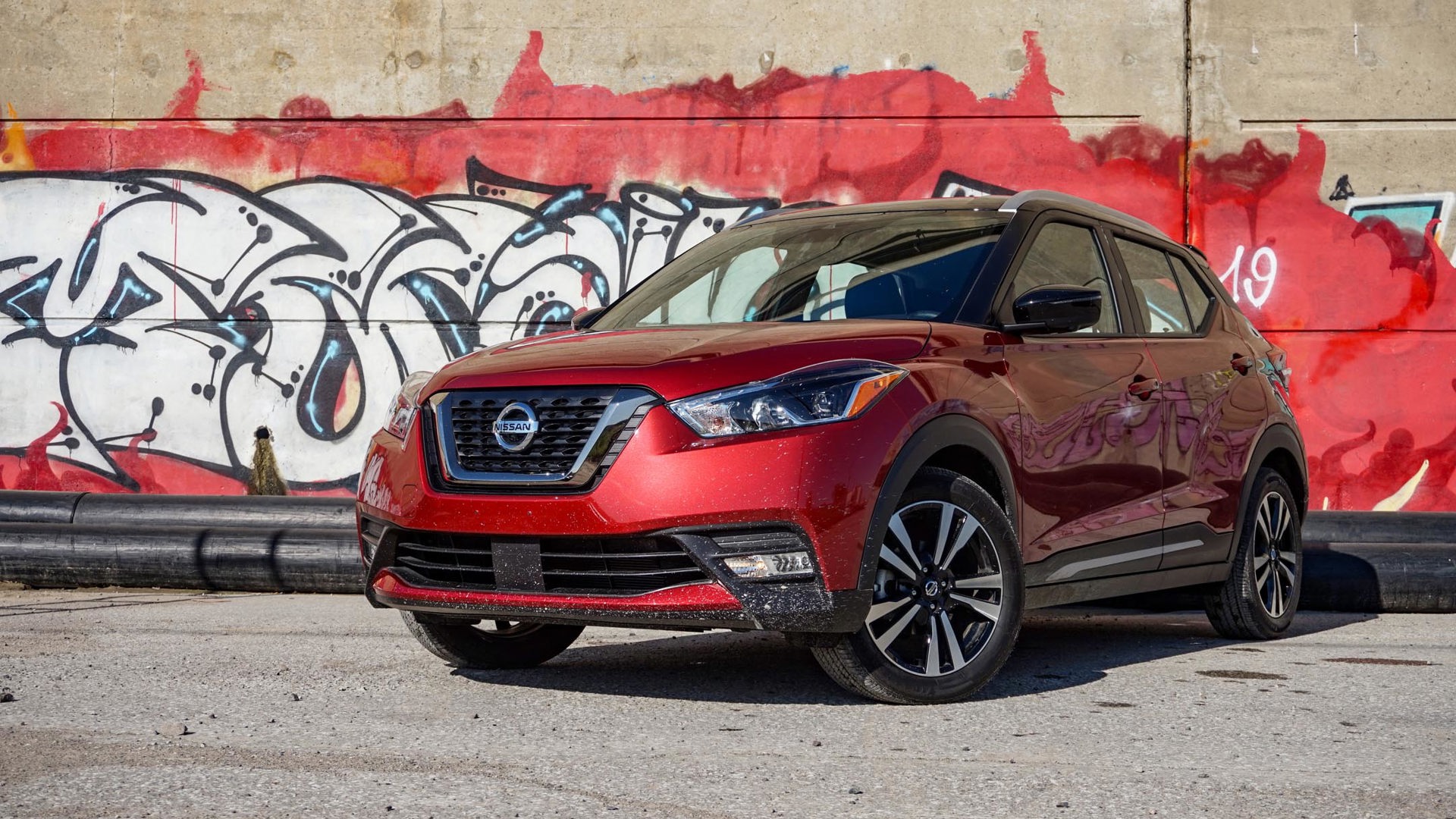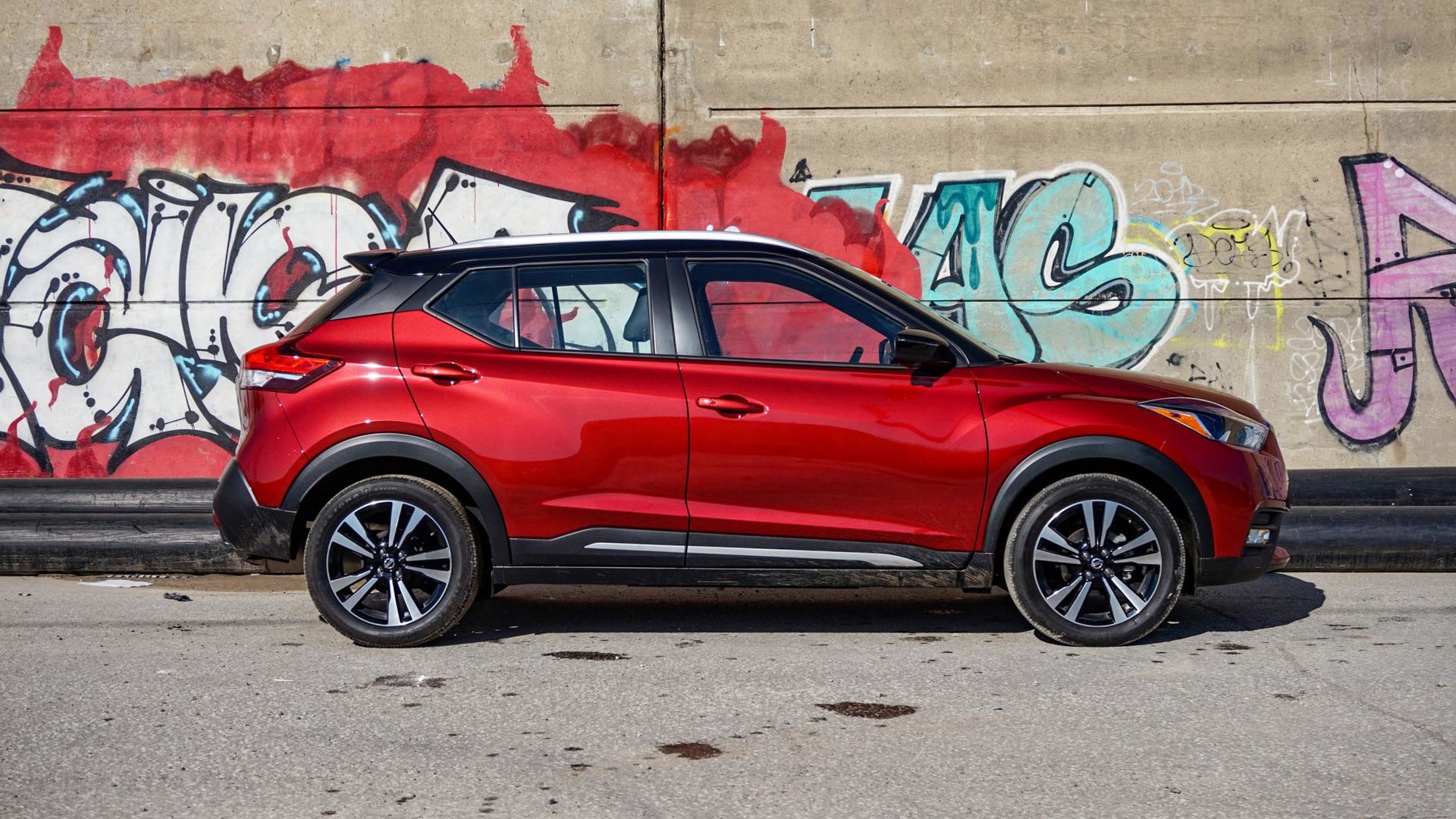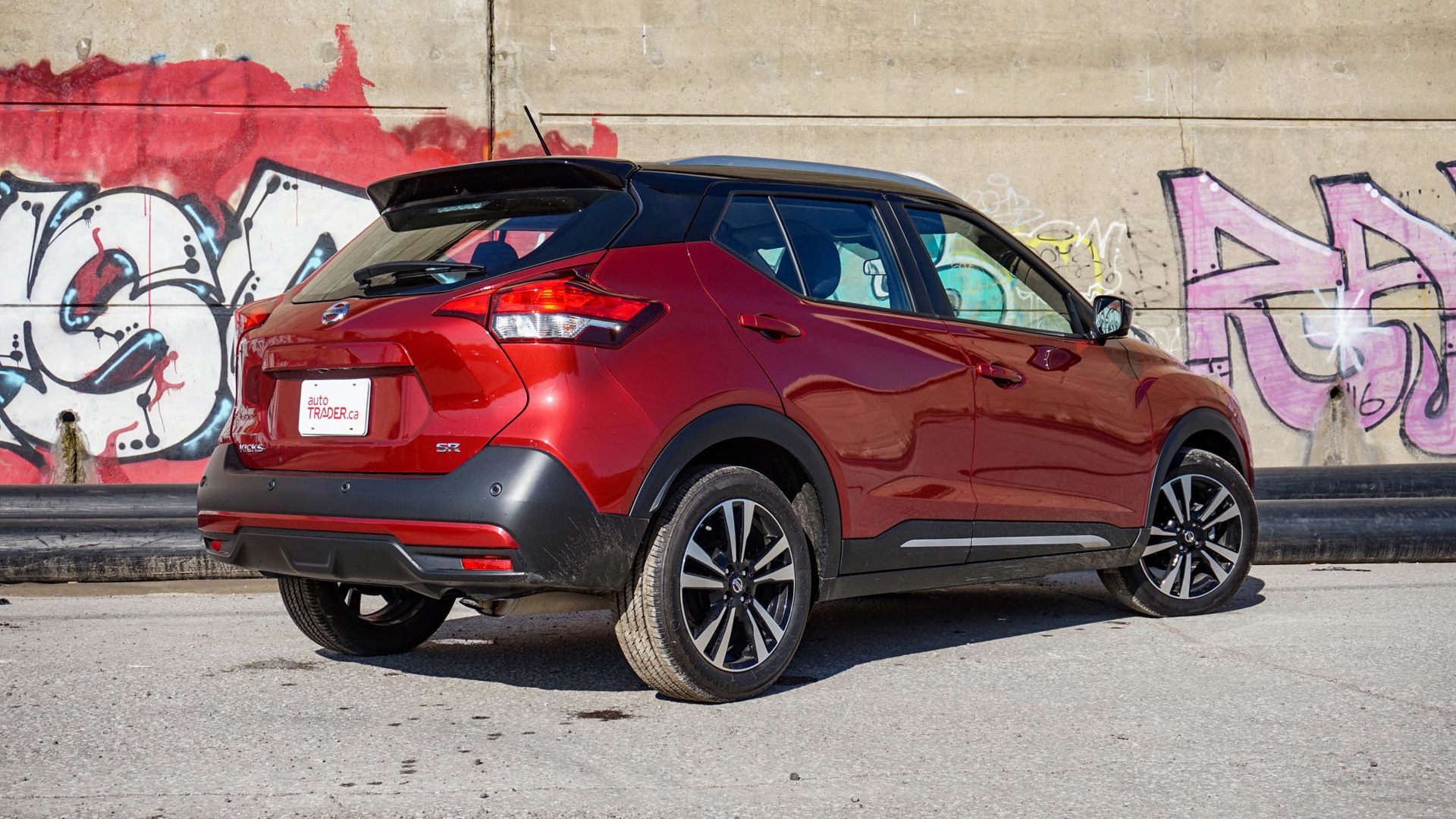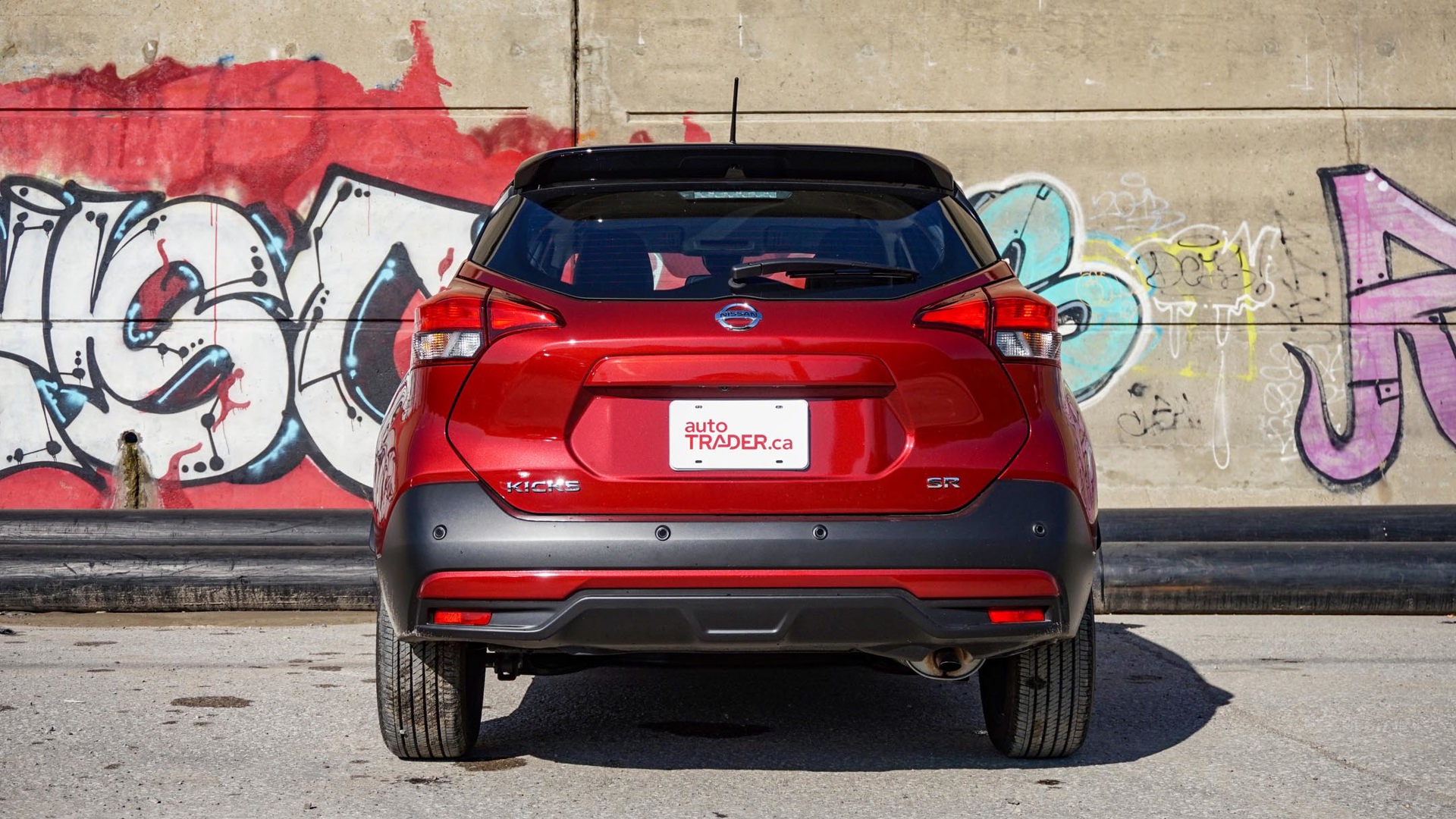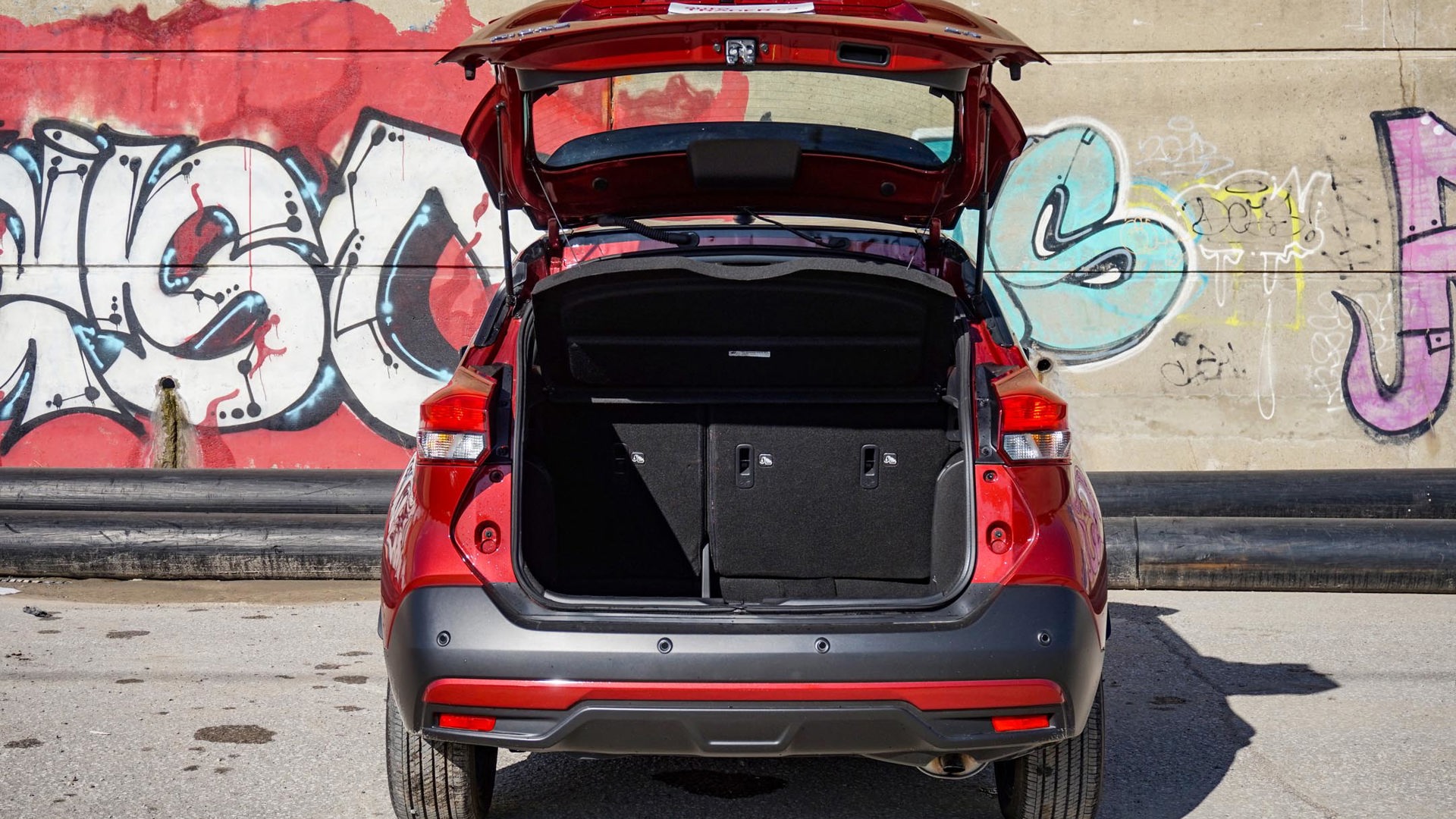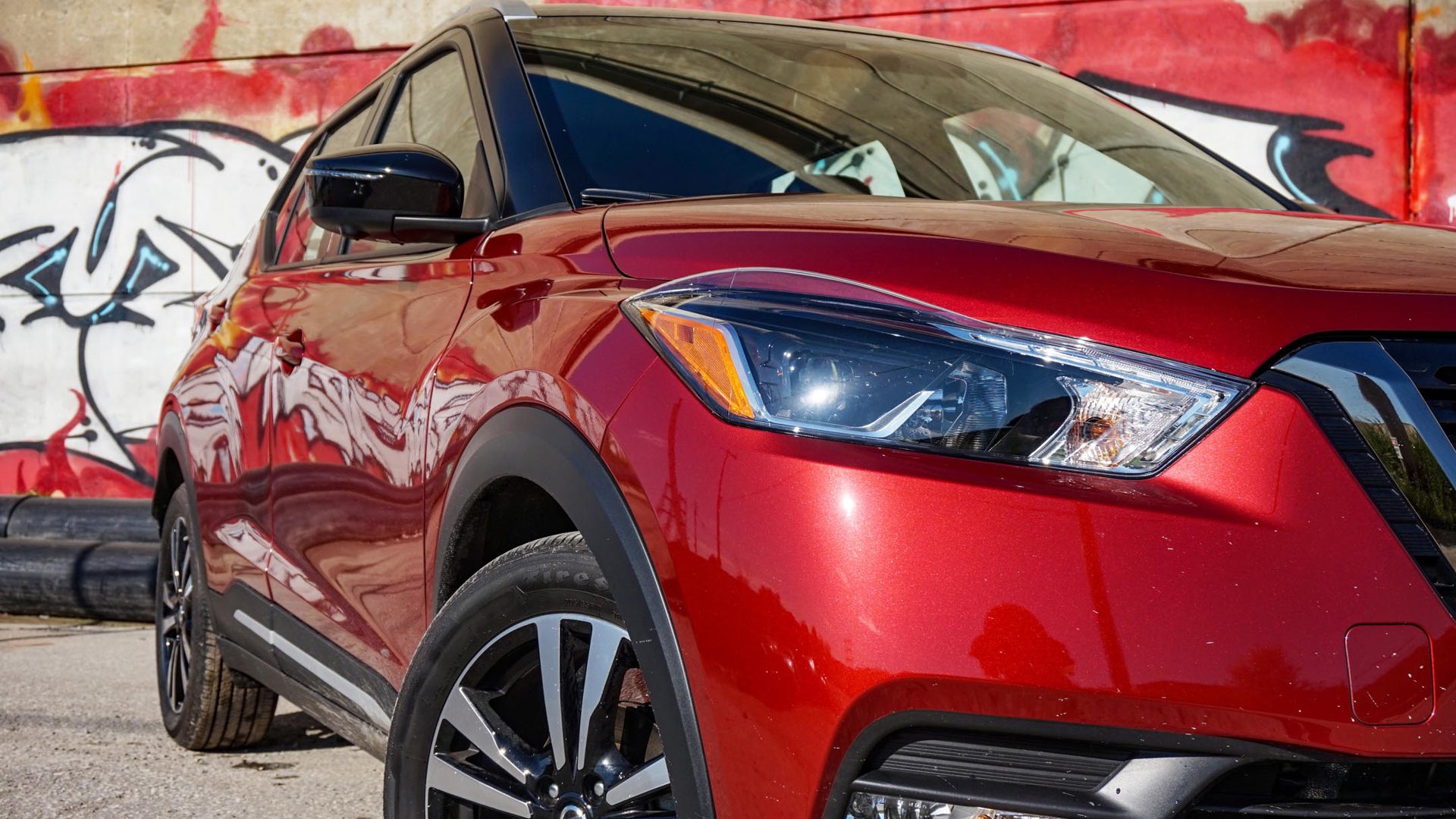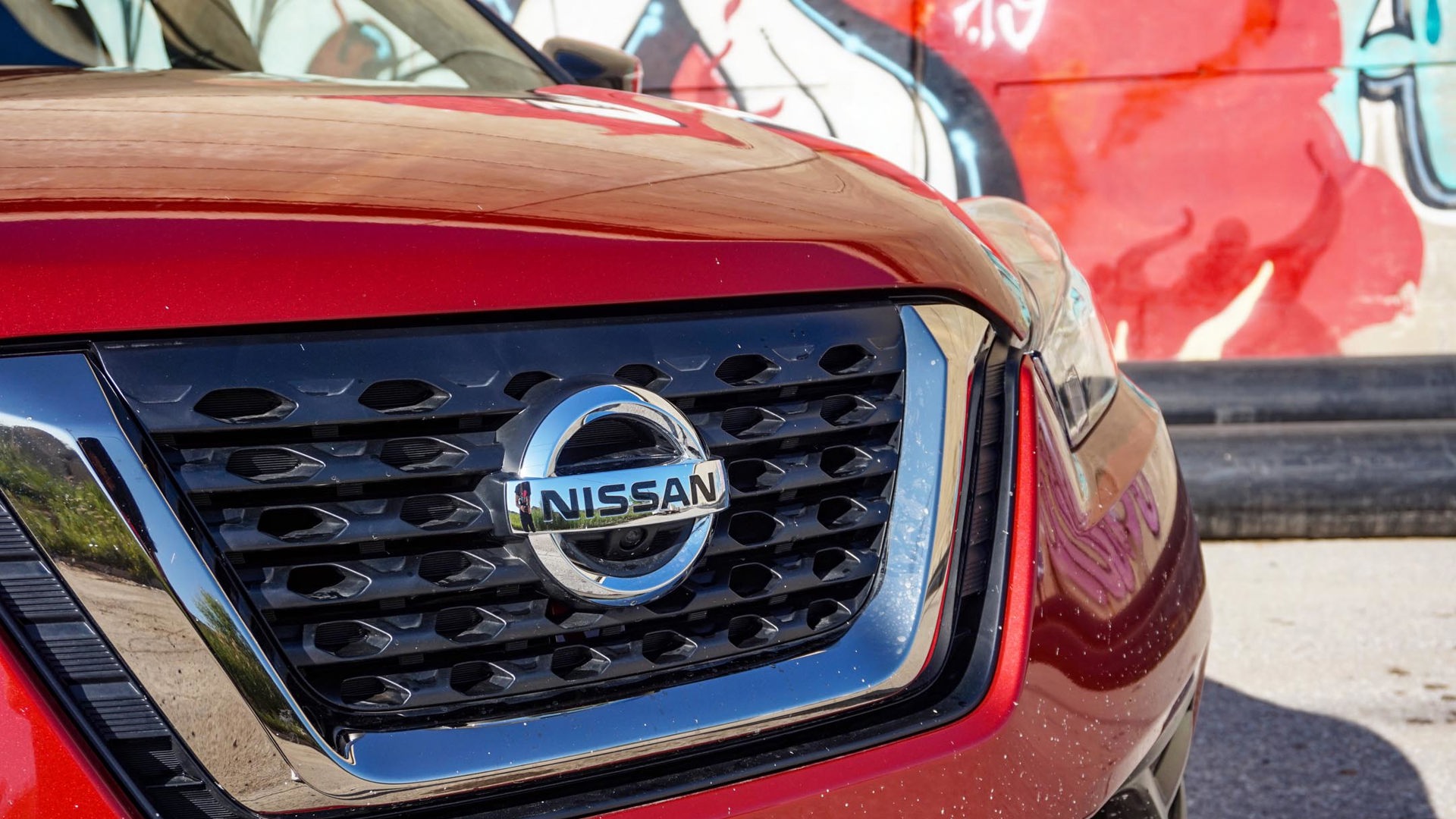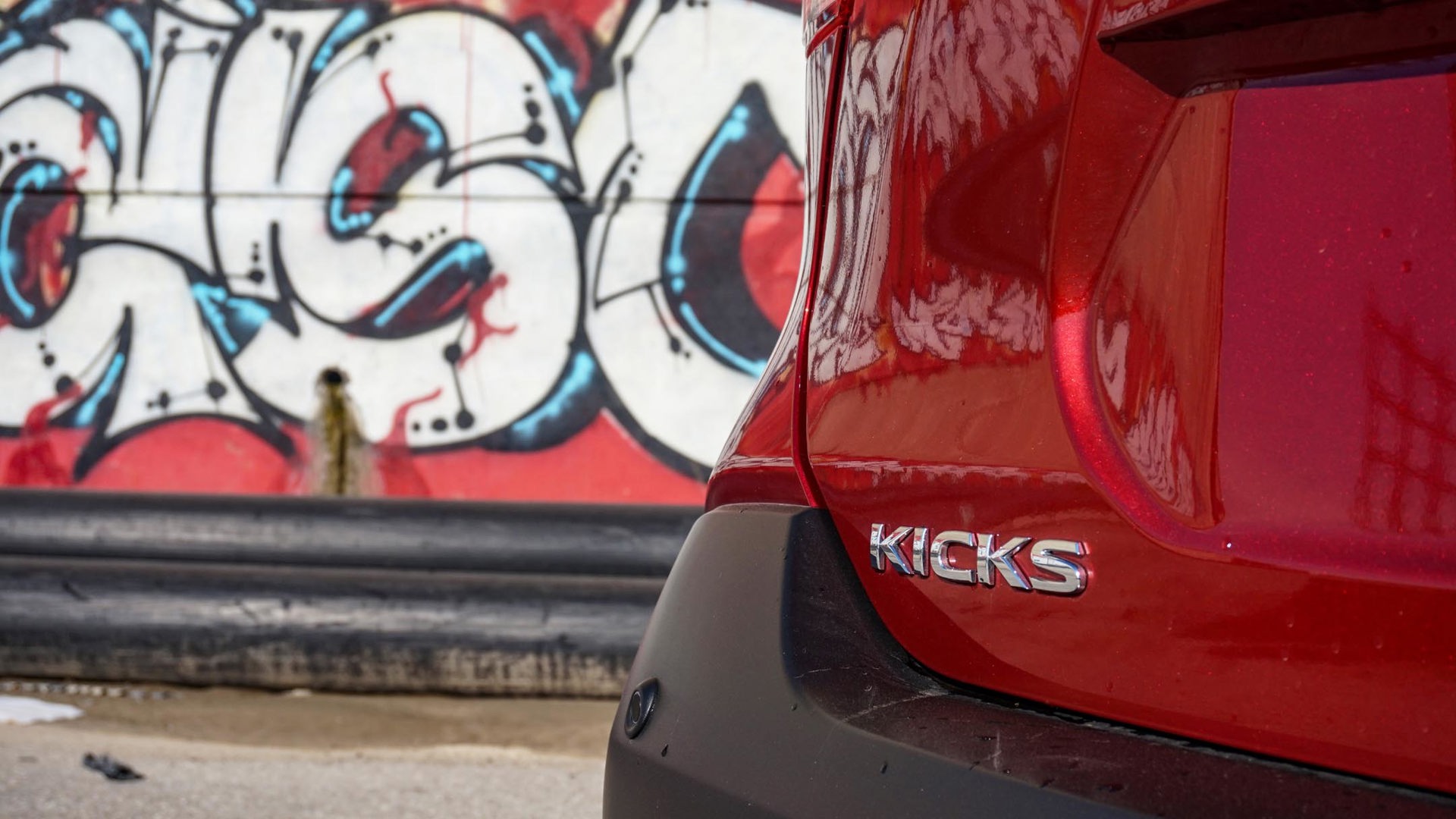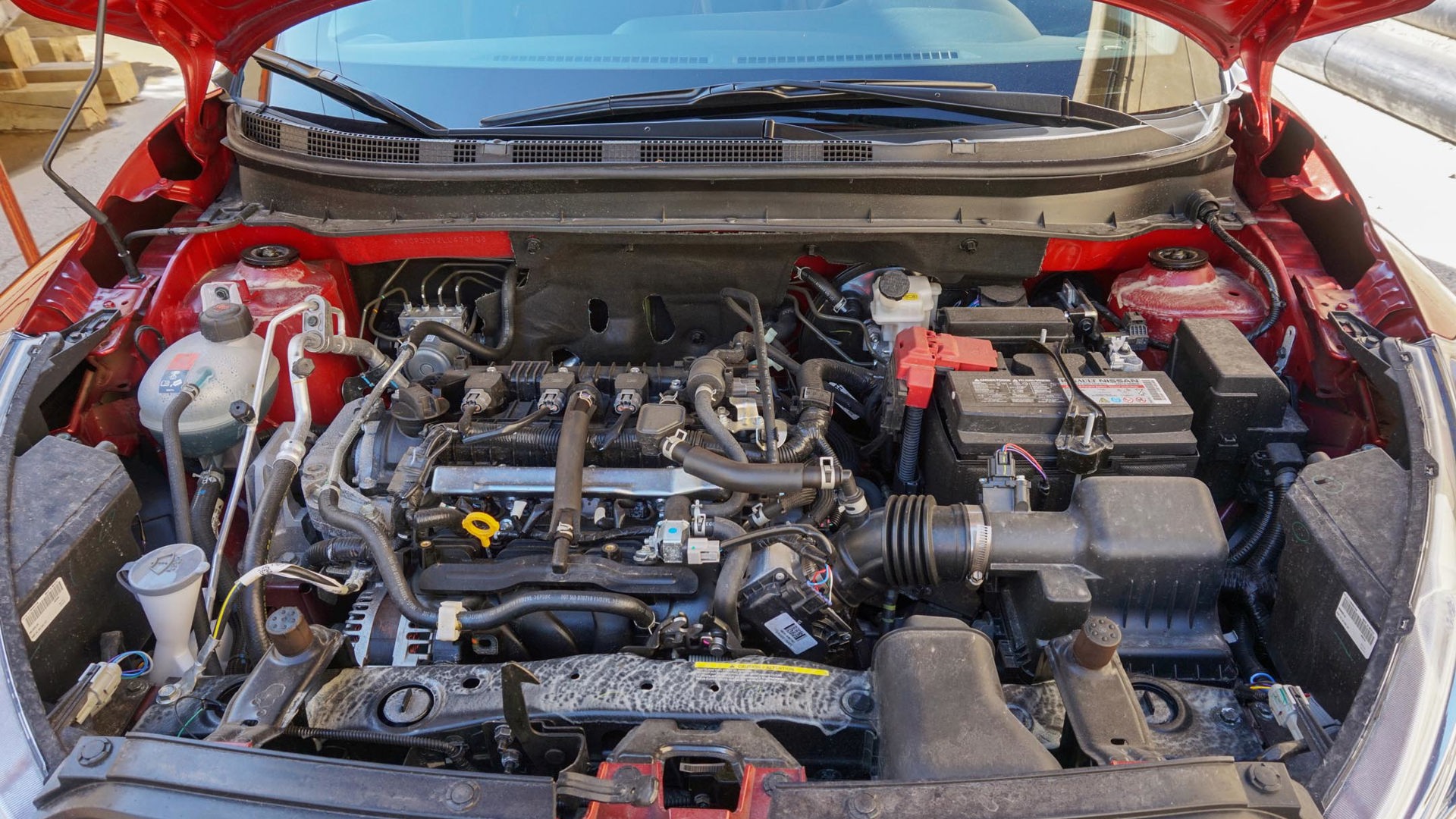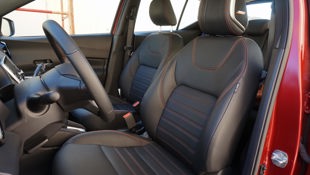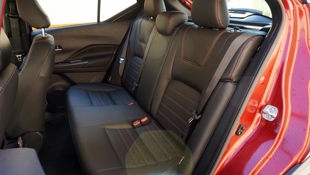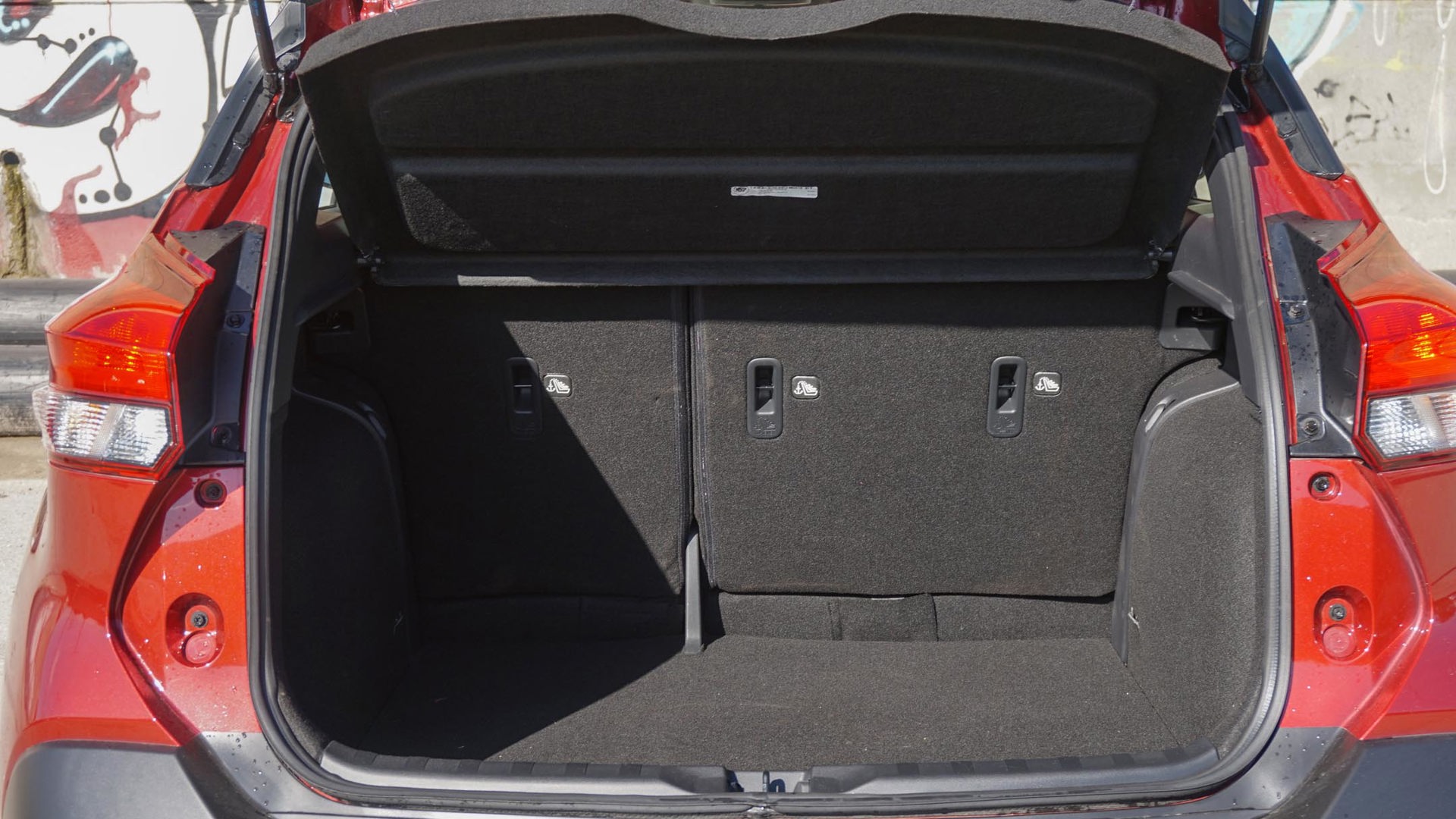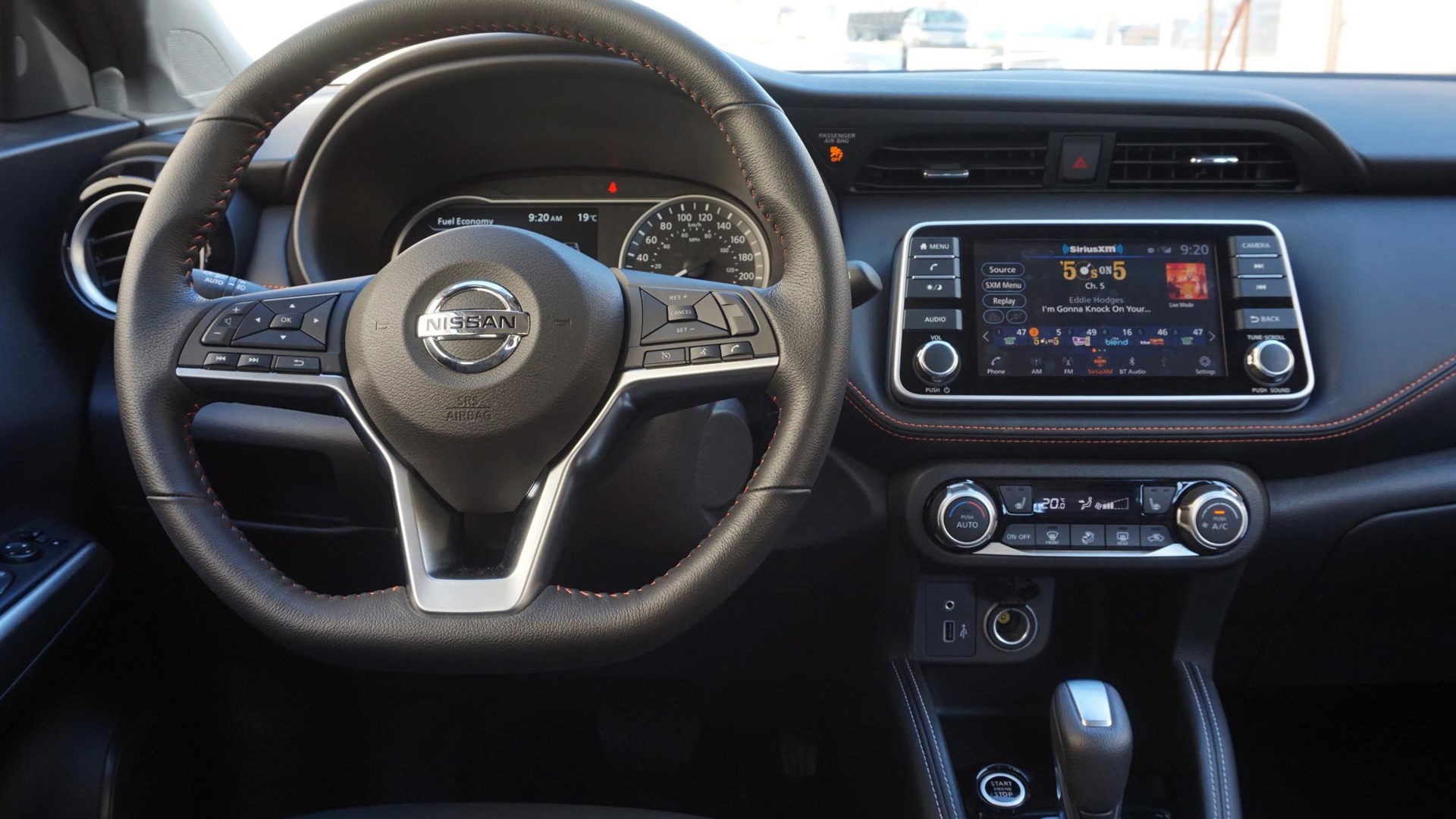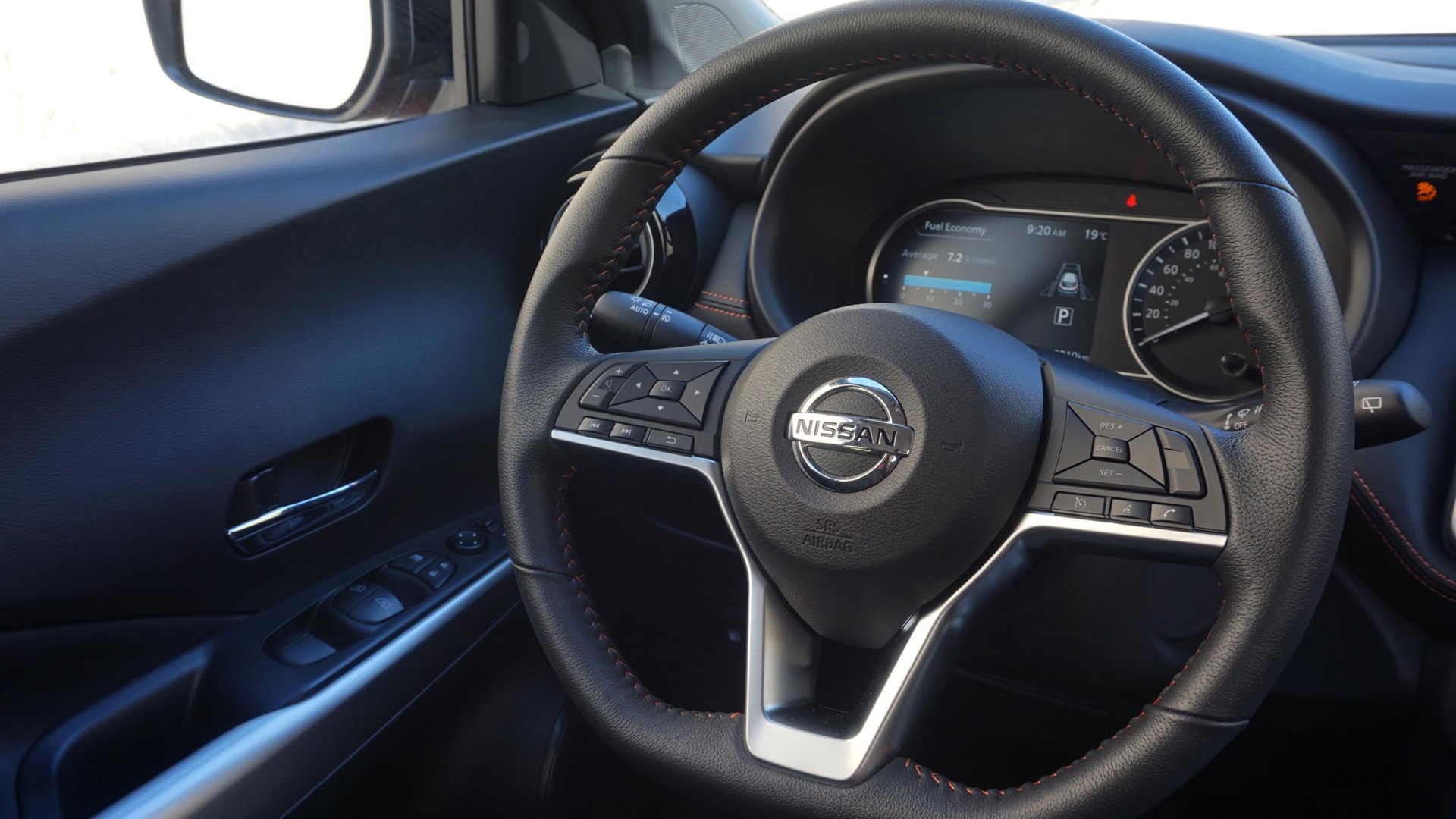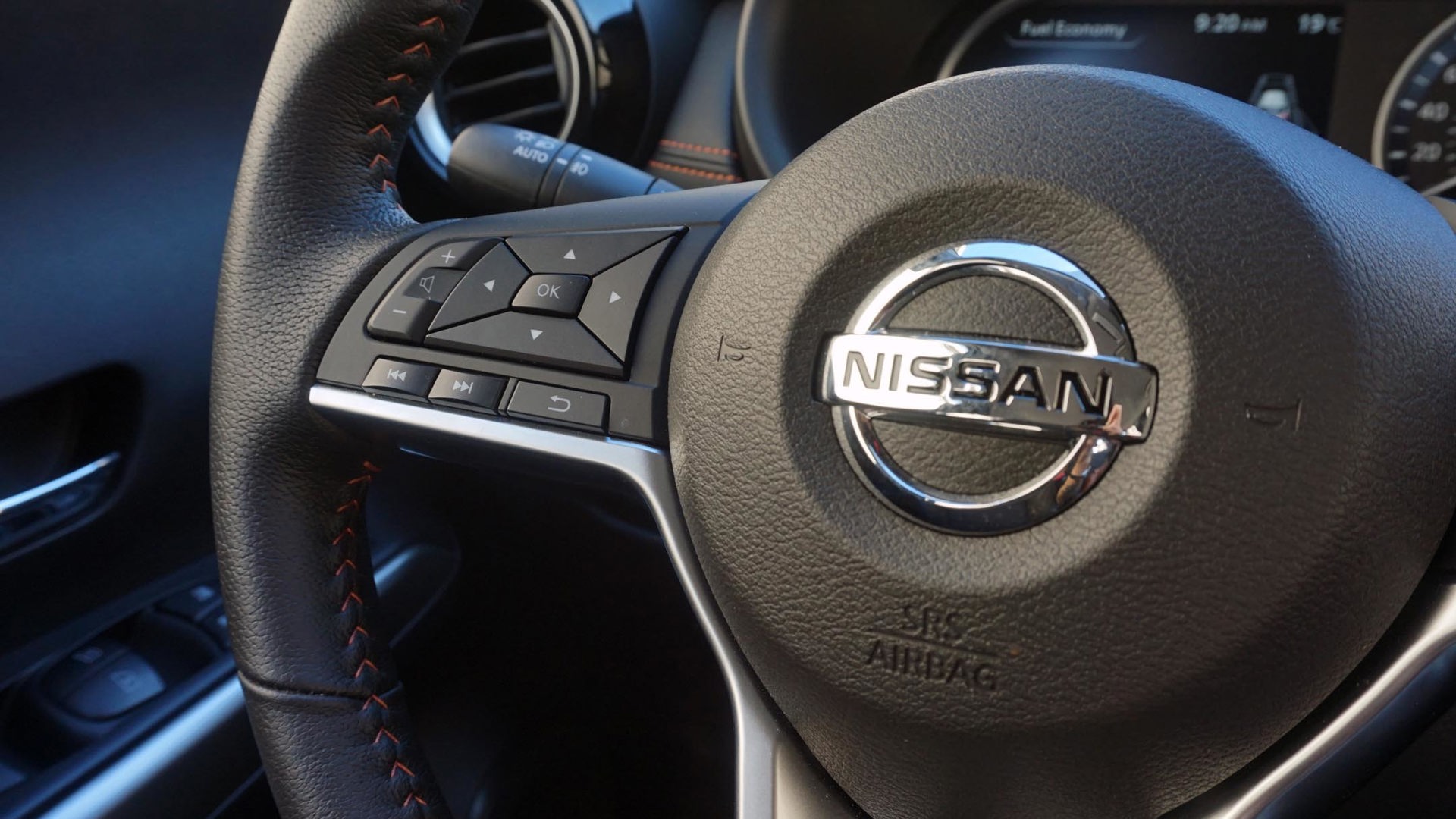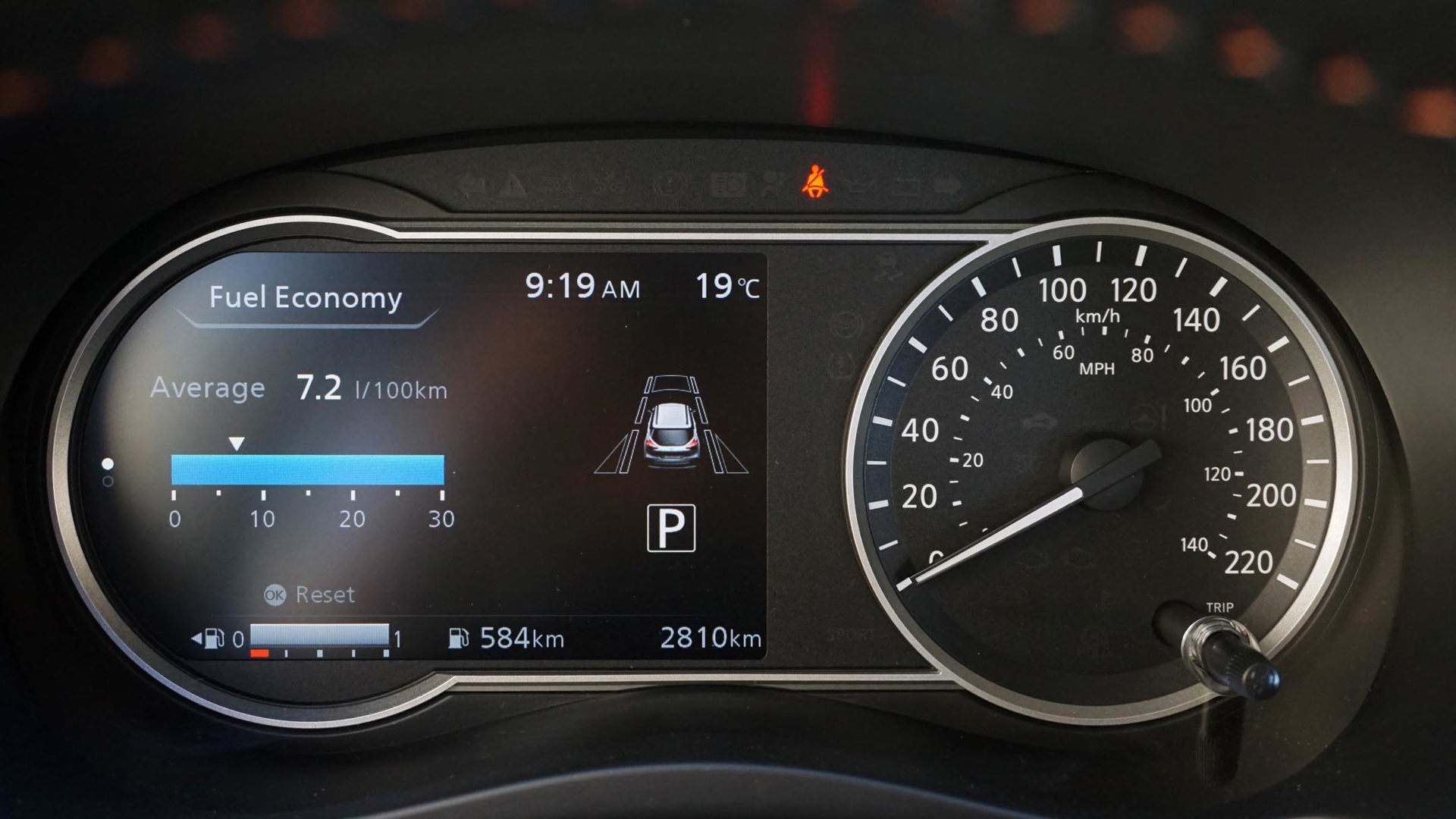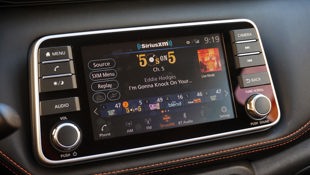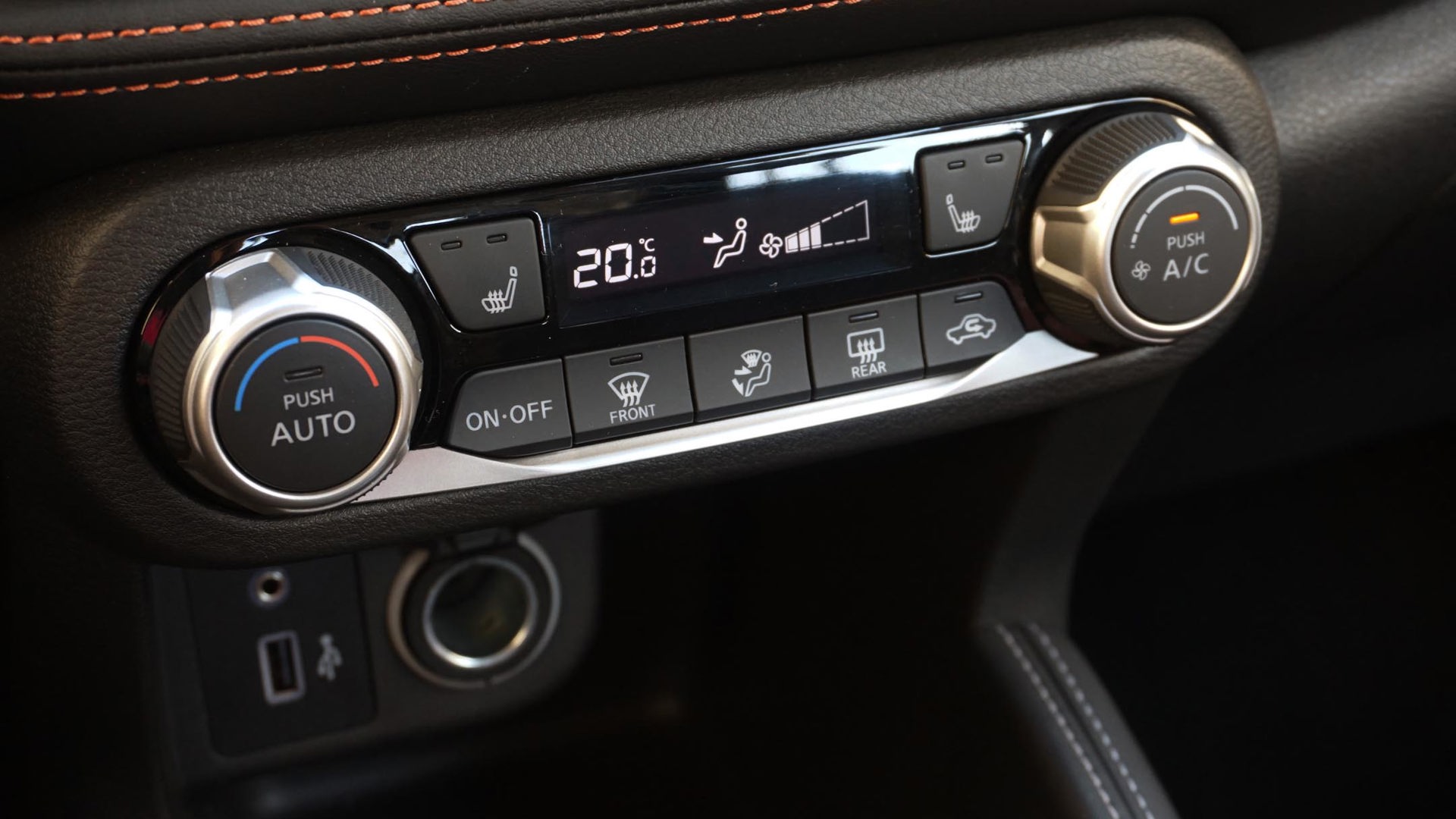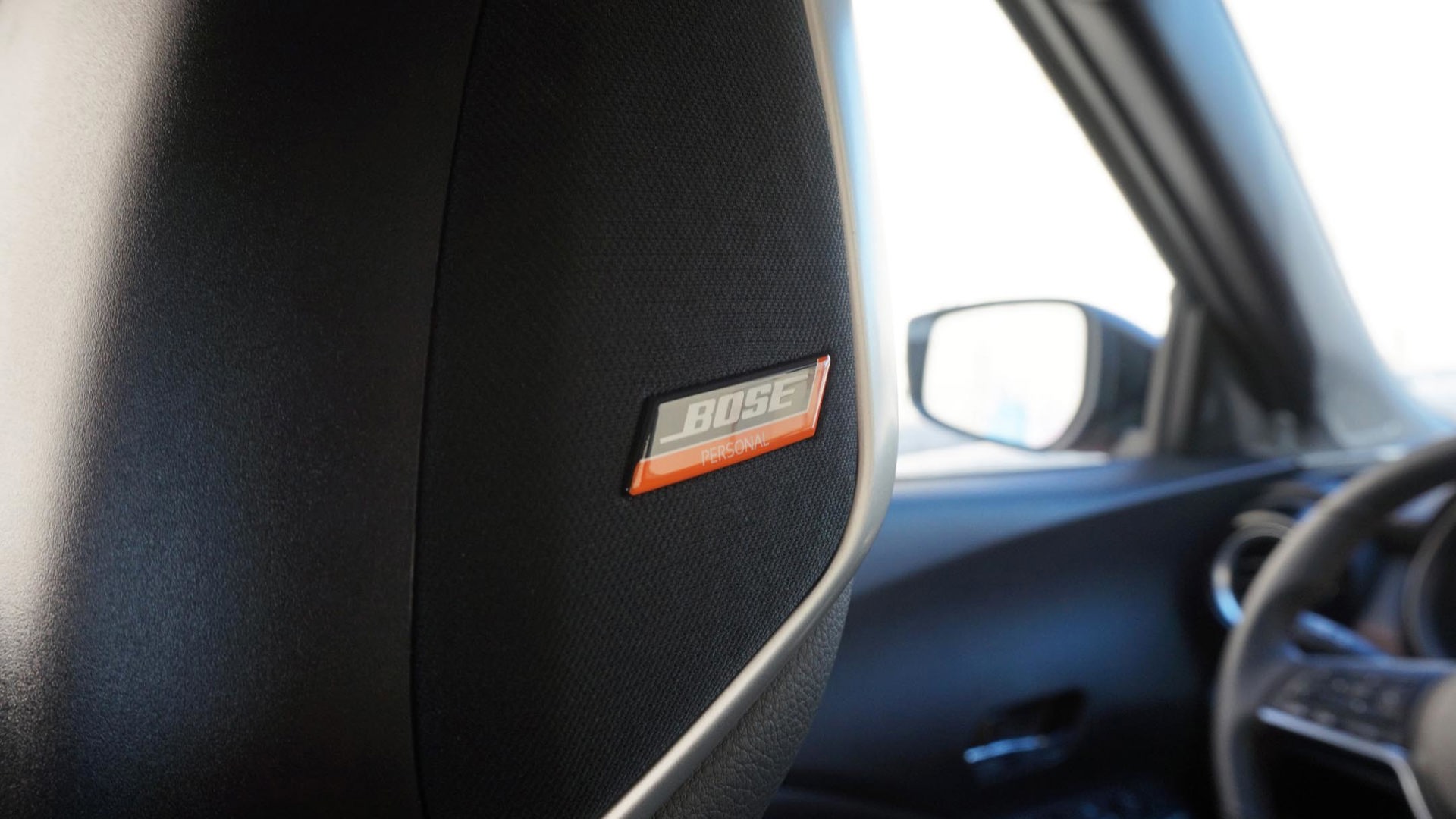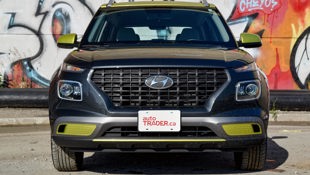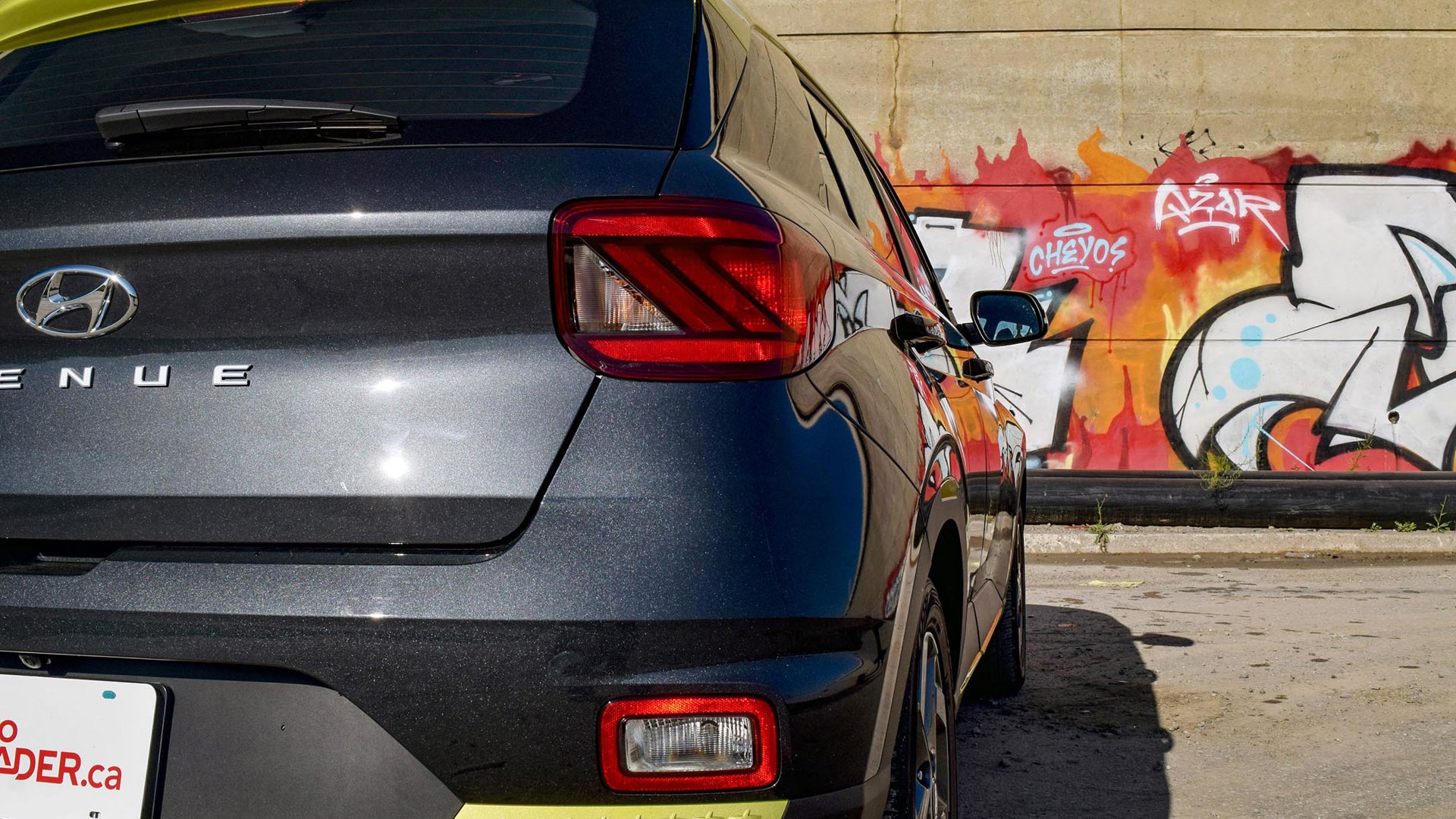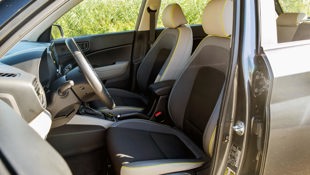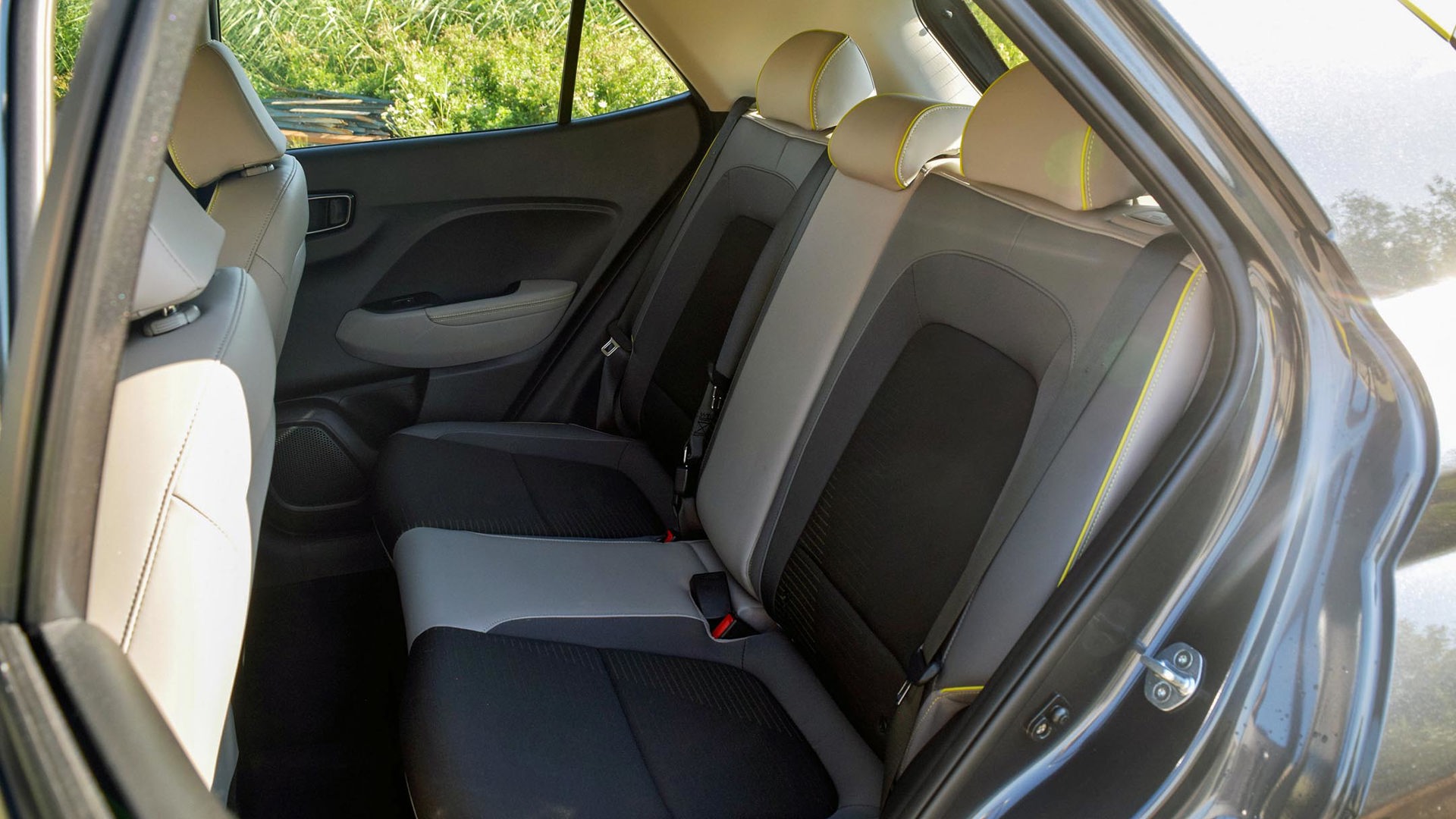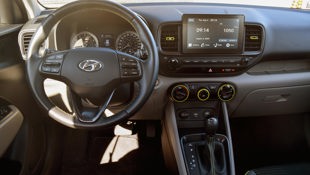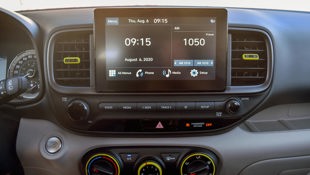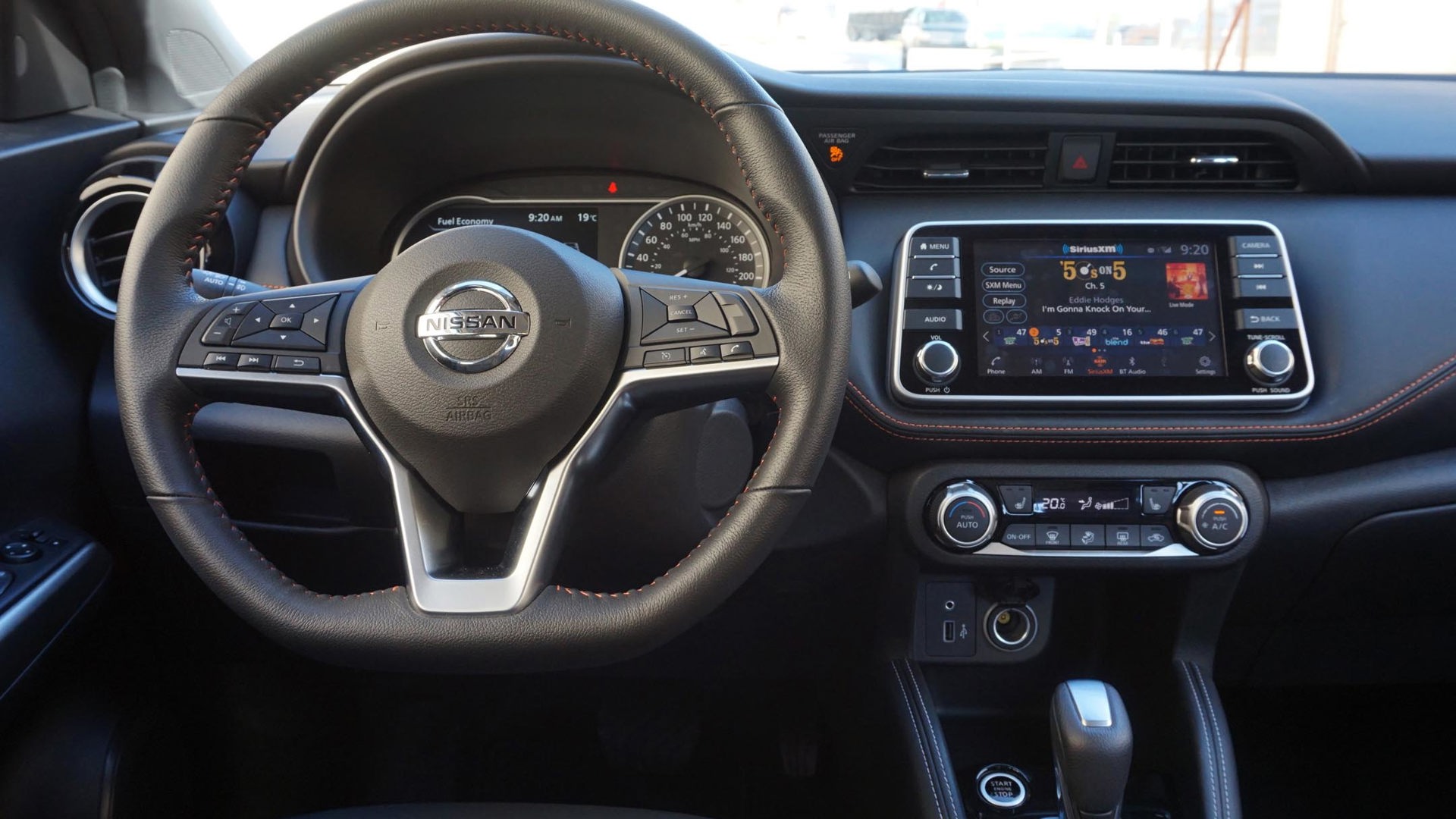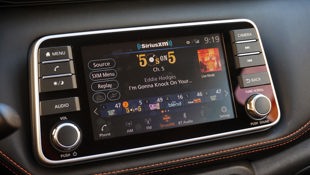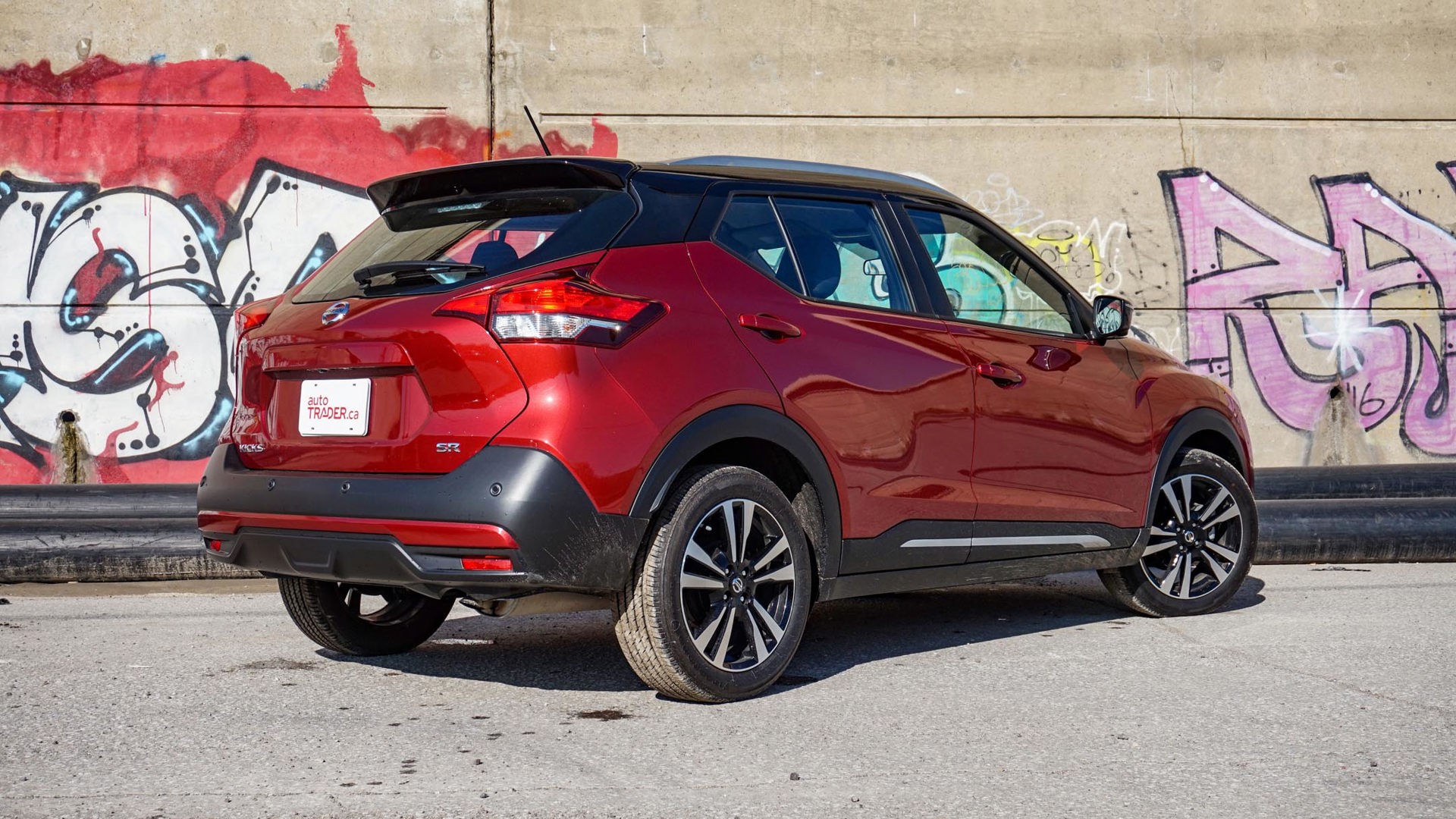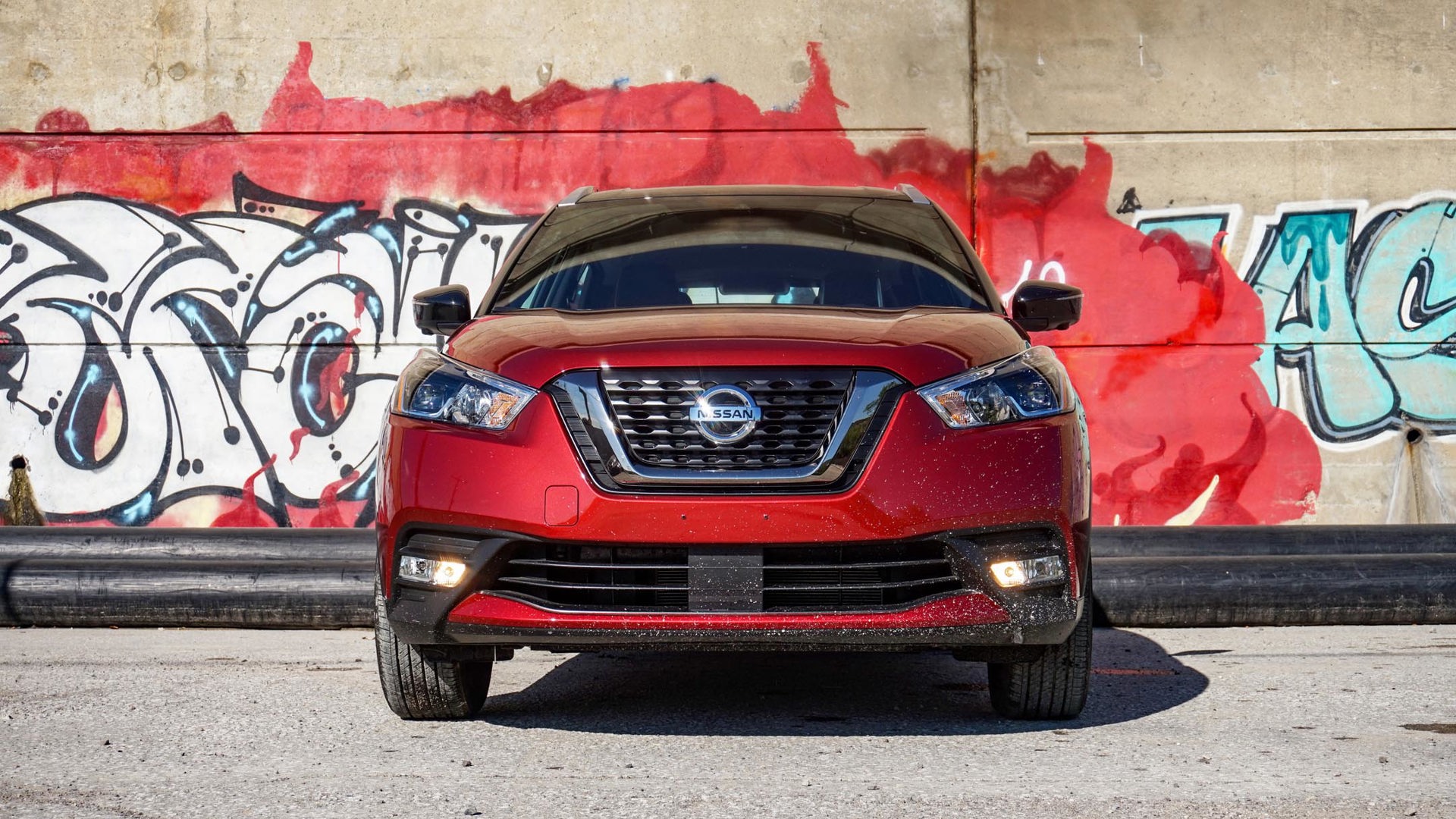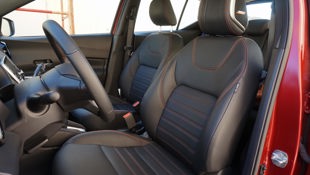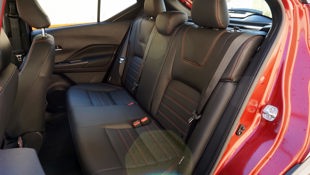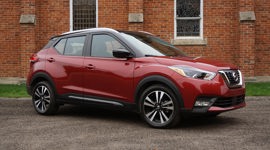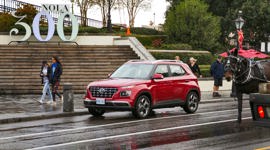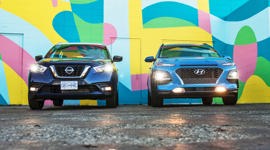Comparison Data
|
2020 Hyundai Venue Trend
|
2020 Nissan Kicks SR
|
|---|---|
|
Engine Displacement
1.6L
|
1.6L
|
|
Engine Cylinders
I4
|
I4
|
|
Peak Horsepower
121 hp @ 6,300 rpm
|
122 hp @ 5,800 rpm
|
|
Peak Torque
113 lb-ft @ 4,500 rpm
|
114 lb-ft @ 4,000 rpm
|
|
Fuel Economy
8.0 / 7.0 / 7.5 L/100 km cty/hwy/cmb
|
7.7 / 6.6 / 7.2 L/100 km cty/hwy/cmb
|
|
Cargo Space
529 / 902 L seats down
|
716 / 915 L seats down
|
|
Base Price
$22,599
|
$24,098
|
|
A/C Tax
$100
|
$100
|
|
Destination Fee
$1,810
|
$1,815
|
|
Price as Tested
$24,509
|
$26,013
|
|
Optional Equipment
$500 – Urban Package, $500
|
$335 – Paint, $335
|
For those wondering where all the affordable cars have gone – it’s already too late.
Well, the truth is they’re transforming into crossovers, with the concept of basic transportation making the move to this more practical body style. The phrase “cheap and cheerful” that’s long been used to describe the puny, personality-filled economy cars of old is due for a makeover, and the 2020 Nissan Kicks and Hyundai Venue fit the bill perfectly. Both can brighten your mood with their available two-tone exteriors or highlighted accents and deliver on the promise of being budget-friendly, too.
Exterior Styling
While the Nissan Kicks is a bubbly subcompact crossover offered with a two-tone roof option, it does appear a bit bland compared to the boxy-but-stylish Venue. However, those who appreciate something a little more conservative might like the Kicks more. Exterior styling cues on the higher trim levels like chrome strips on the roof and beneath the doors help slim the Kicks and make it look less bulky.
The Venue, on the other hand, manages to make its bulkiness stand out, with available contrasting highlights on the roof, fenders, side skirts, mirrors, and grille. The design has an upright profile and provides the expectation of a more practical vehicle. Squares and squircles are a common motif for the exterior design. The lighting signature is squared off, and the wheels use square shapes to stand out as well. Overall, it seems like there was a bit more care and attention paid to the Venue’s design.
Nissan Kicks Exterior Styling: 6.5/10
Hyundai Venue Exterior Styling: 7.5/10
Interior Design
The Kicks feels especially budget-oriented inside. While the gauge cluster features a nice display screen and there’s a useful infotainment system docked in the centre stack, the materials and plastics in the cabin seem flimsy. However, the buttons and switchgear feel a bit nicer in here than they do in the Venue, but the overall experience doesn’t inspire a lot of joy. The armrest is attached to the driver’s seat, and feels like an afterthought.
The Venue’s biggest issue with its interior design is the poor fit and finish. Knobs are wriggly, like the drive mode selector that moves around like it wasn’t installed properly. Buttons lack that tactile response; instead, they deliver a vague indication of being pressed. On the other hand, the splashes of colour on the seats, console, and dash make it seem, again, like at least some level of detail went into the design. There’s also a shelf on the passenger side of the dashboard and a console bin for extra storage.
Nissan Kicks Interior Design: 5.5/10
Hyundai Venue Interior Design: 6.5/10
Interior Space and Practicality
These two vehicles are close when it comes to interior accommodations. The Venue offers more head- and legroom for rear passengers, while the Kicks feels a bit more spacious for front-seat riders.
While the cabin space feels similar, the difference in cargo room is significant. The Kicks has a good chunk more volume in the cargo area than the Venue, with 716 L behind the rear seats compared to the Hyundai’s 529 L. It’s definitely noticeable whether hauling groceries or luggage. The Venue does, however, offer an adjustable cargo floor that can be lowered for a few extra litres of storage, or raised for a fully flat load floor with the rear seats folded. The Kicks does not offer the same flexibility or flat cargo surface, focusing instead on extracting every last bit of space possible from its chassis.
Nissan Kicks Interior Space and Practicality: 7/10
Hyundai Venue Interior Space and Practicality: 6.5/10
Features and Technology
Generally, the idea of a cheap car conjures images of spartan vehicles lacking in comfort and convenience features. That’s no longer the case, and these two CUVs offer quite a lot of equipment for their asking price.
The Venue comes standard with automatic headlights, heated front seats, and an eight-inch touchscreen infotainment system with Android Auto and Apple CarPlay support. All but base models also include a heated leather steering wheel, blind-spot warning, high-beam assist, drive mode selector, and push-button start.
There are also some features that cost extra – or are reserved for the top trim – like full exterior LED lighting, leather seat bolsters, a higher-resolution infotainment screen with built-in navigation, automatic climate control, one-touch automatic driver’s window, a sunroof, and some driver’s assistance features.
The Kicks also has a good selection of standard features in its base S form, although Nissan reserves the most useful and convenient items for the SR and SV trim levels. Standard are push-button start and a suite of safety equipment and driver assistance features, including blind-spot monitoring, lane-departure warning, and parking sensors, as well as front and rear emergency braking. Other features, like heated seats, automatic climate control, Android Auto and Apple CarPlay compatibility, automatic headlights, heated mirrors, and high-beam assistance are only found on higher trim levels.
While both crossovers offer plenty of features to make them feel more expensive than they really are, the Venue skews a bit more to the comfort and convenience end of the spectrum, while the Kicks has more driver’s assistance and safety features.
Nissan Kicks Features and Technology: 6.5/10
Hyundai Venue Features and Technology: 7/10
Powertrain
Both feature 1.6L four-cylinder engines that are extremely close in terms of output. In the Kicks, the motor makes 122 hp and 114 lb-ft of torque, while the Venue manages 121 hp and 113 lb-ft of torque. Both vehicles are front-wheel-drive only, and the Venue offers a six-speed manual transmission in its most basic model, and a continuously variable transmission (CVT) in all the rest. The Kicks, meanwhile, only comes with a CVT.
On the road, the Kicks feels surprisingly eager to get going. Throttle tip-in is met with a very energetic burst of energy, and we commend Nissan for making a cheap and low-powered crossover feel like something more enthusiastic. It’s perfect for running around town, heading out into the suburban sprawl, or even cruising on the highway.
The Venue feels lethargic in comparison, lacking the same enthusiasm off the line. Passing attempts are met with a ton of noise without much movement. The sport mode helps the vehicle operate with a slightly more aggressive transmission tune but the noisiness and limited acceleration is the same no matter the setting. The Venue doesn’t feel agile or responsive enough in town and isn’t powerful enough to make passes on the highway. It’s good enough to cruise in between those two scenarios but isn’t as enjoyable as the Kicks.
Nissan Kicks Powertrain: 6.5/10
Hyundai Venue Powertrain: 5.5/10
Fuel Economy
These two crossovers also feature remarkably similar fuel consumption, with the Kicks just slightly edging out the Venue. Expect the Kicks to return 7.7 L/100 km in the city, 6.6 on the highway, and 7.2 combined, while the CVT-equipped Venue consumes 8.0 L/100 km in the city, 7.0 on the highway, and 7.5 combined. Manual-equipped Venue models are a bit less fuel-efficient, with a combined consumption of 7.8 L/100 km.
Nissan Kicks Fuel Economy: 7.5/10
Hyundai Venue Fuel Economy: 7/10
Driving Feel
In recent years, both of these automakers have shown just how much fun their small cars can be. The Hyundai Veloster earned plenty of fans with its latest generation – especially in N guise – while the Nissan Micra proved that cheap cars can even be pushed to the limit in the Canada-wide Micra Cup racing series.
However, jumping into these two crossovers, it’s clear that only one is out to continue that legacy of being enjoyable to drive: the Kicks. Beyond its eager and responsive powertrain, it also feels a bit more agile and engaging to drive. The Venue just doesn’t exude a cheerful attitude on the road.
However, being fun to drive isn’t all that should be considered here. Both the Venue and Kicks feel reassuring rather than cheap and flimsy. While the Kicks feels a bit more solid than the Venue most of the time, the braking experience leaves a bit to be desired. Every Kicks model comes with rear drum brakes, while the top-spec Venue features rear disc brakes. The biggest gripe with the Venue is that the suspension sometimes sounds a bit dramatic, with the sounds of bumps and cracks in the road permeating the cabin. It’s not a big deal, but is something of a reminder that Hyundai was out to save a few bucks here.
Nissan Kicks Driving Feel: 7/10
Hyundai Venue Driving Feel: 6/10
Safety
The Nissan Kicks has been tested by the Insurance Institute for Highway Safety (IIHS) and didn’t score well enough to be recognized as a Top Safety Pick. While the crash-test results were promising, scoring “good” across the board, the poor headlights were enough to bring the safety rating down. The tests show that the model’s halogen low beam headlights provide inadequate visibility, while the LED low beams are a bit better but cause glare. The little Nissan’s best traits are the crash-avoidance features like blind-spot monitoring and lane-departure warning, which are standard in the base trim.
The IIHS has awarded the Venue with a Top Safety Pick rating, with only poor performance from its base halogen headlights holding it back from a Top Safety Pick Plus rating. It’s also important to note that Hyundai offers disc brakes on the Venue, which Nissan doesn’t offer. However, the Venue’s safety technology isn’t found on base models, and shoppers have to pick a more expensive model to get these benefits.
Nissan Kicks Safety: 7/10
Hyundai Venue Safety: 6.5/10
Value
The Nissan Kicks starts at $19,398 for the S model, before the freight fee of $1,815. The next step up is the SV model, which is $22,098, while the top-spec model is the SR, which starts at $24,098. The extra cost paint finishes can range from $135 for the metallic grey, while Aspen White and Pearl Blue are $300 each. The two-tone paint finishes can range from $335 to $500, depending on the combination.
The Venue starts at $17,099, not including the $1,810 freight fee. That price is for the manual-equipped Essential trim model, while the automatic is an extra $1,300. The Preferred trim model costs $21,499, while the stylish Trend model is $22,599. That Trend trim can also get a $500 Urban Package, which adds the two-tone paint, the premium cloth with interior accents, and LED lighting. The range-topping Ultimate trim is $24,899.
While the base Venue doesn’t sport the same driver-assistance gear as the base Kicks, it’s more affordable, while the top-level model looks more stylish and has more convenience features than the Nissan at a slight price premium.
Nissan Kicks Value: 7/10
Hyundai Venue Value: 8/10
The Verdict
These two crossovers express cheap and cheerful in dramatically different ways, but ultimately are evenly matched, with very close scores in this comparison. The difference in approach is easy to explain: the Kicks is a joy to drive and has a spacious cargo area, while the Venue feels more refined overall and offers a more comfortable cabin with delightful accents – and just edges out the Kicks overall. With neither vehicle commanding a significant lead, the best choice in this case rests entirely on your priorities, but it’s a good dilemma to have on such a limited budget.
Nissan Kicks Total: 60.5
Hyundai Venue Total: 61.5
Also See: Top 10 Cheapest Cars in Canada for 2022
